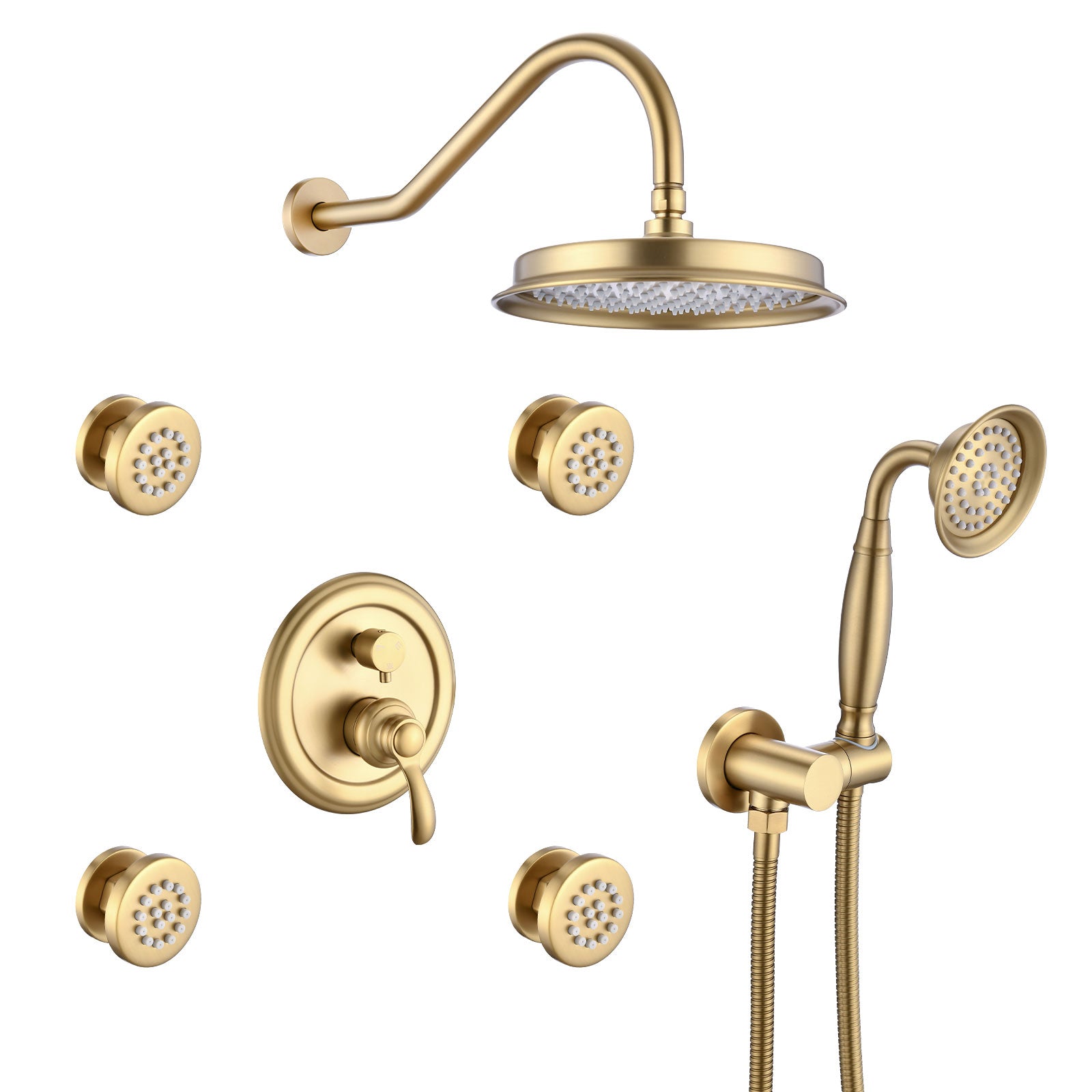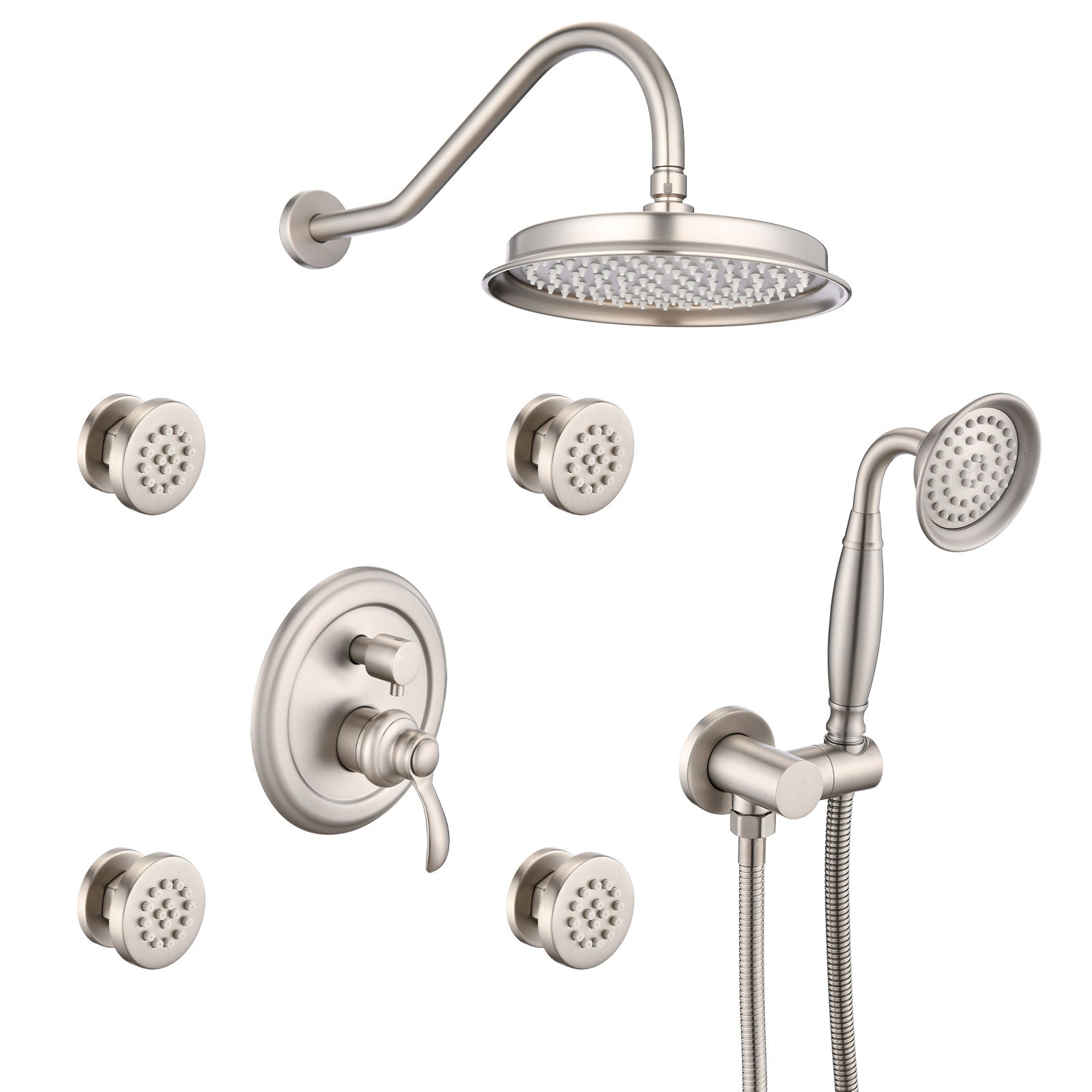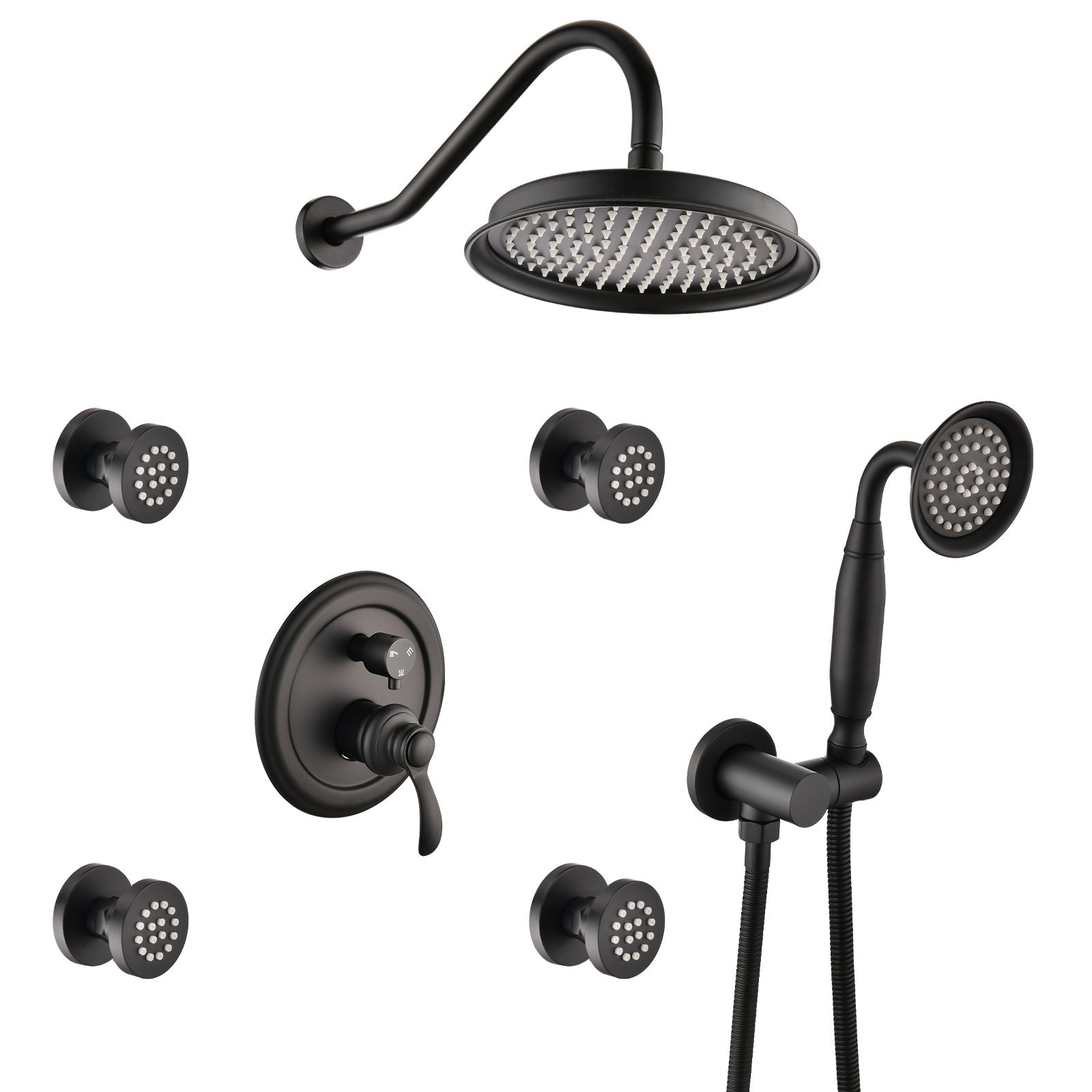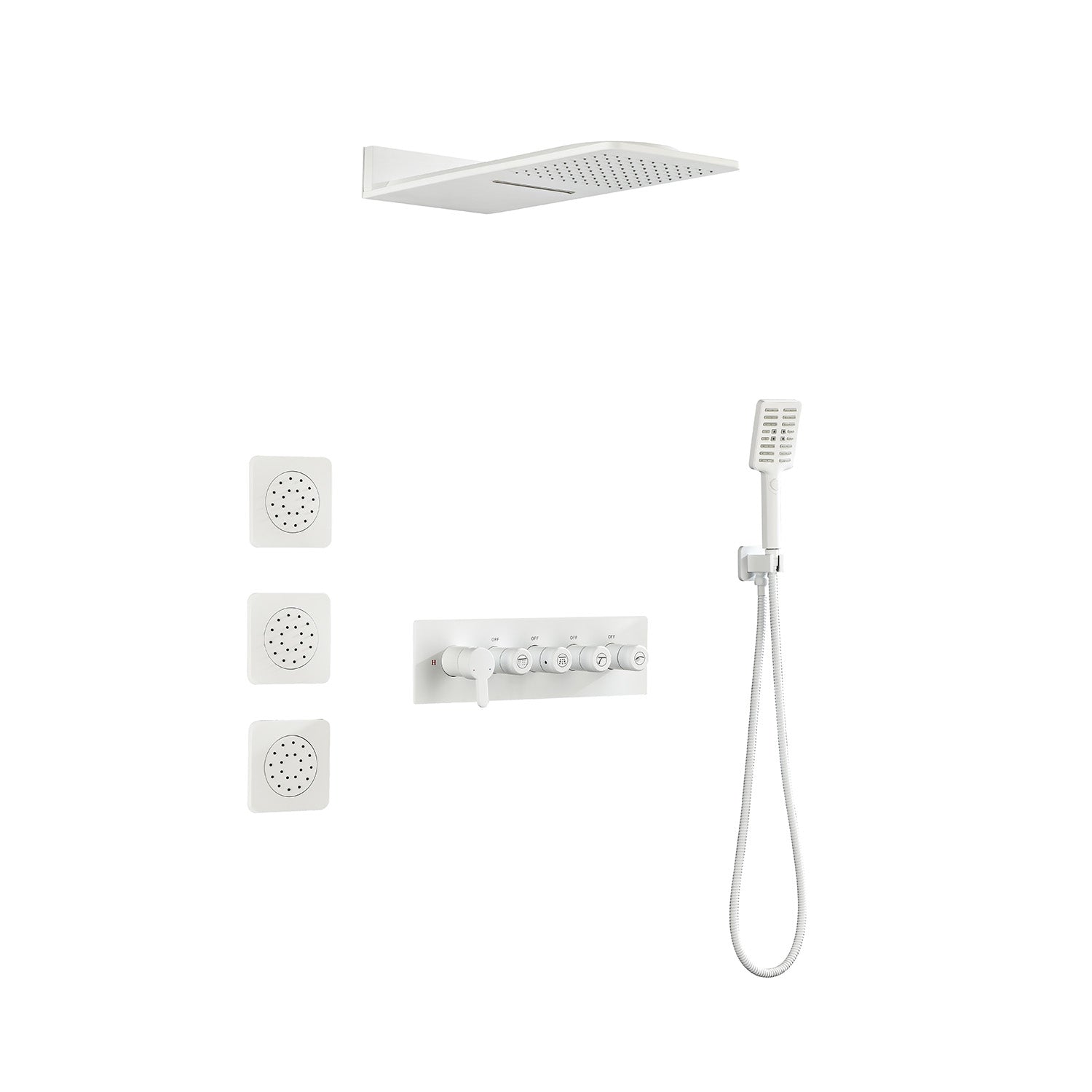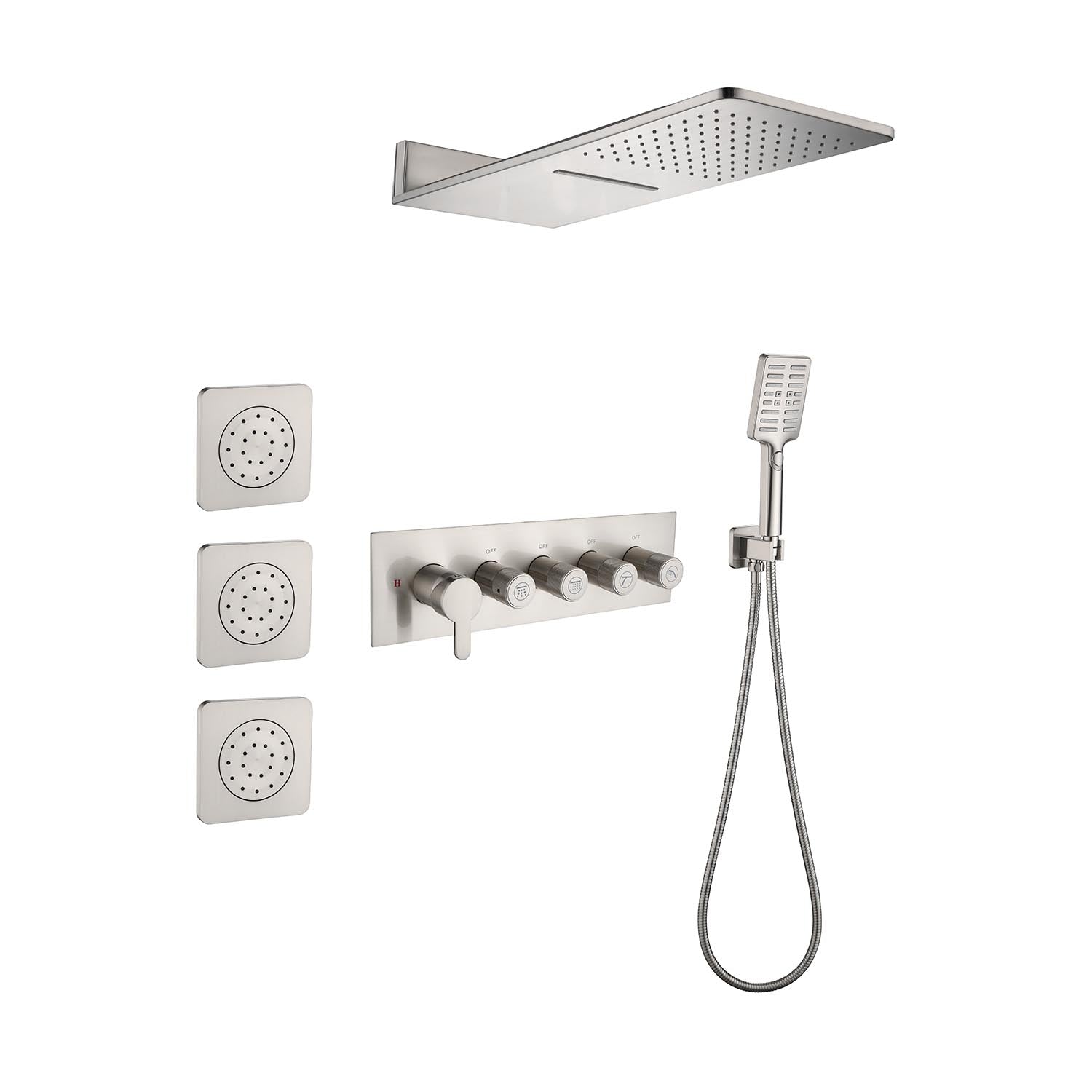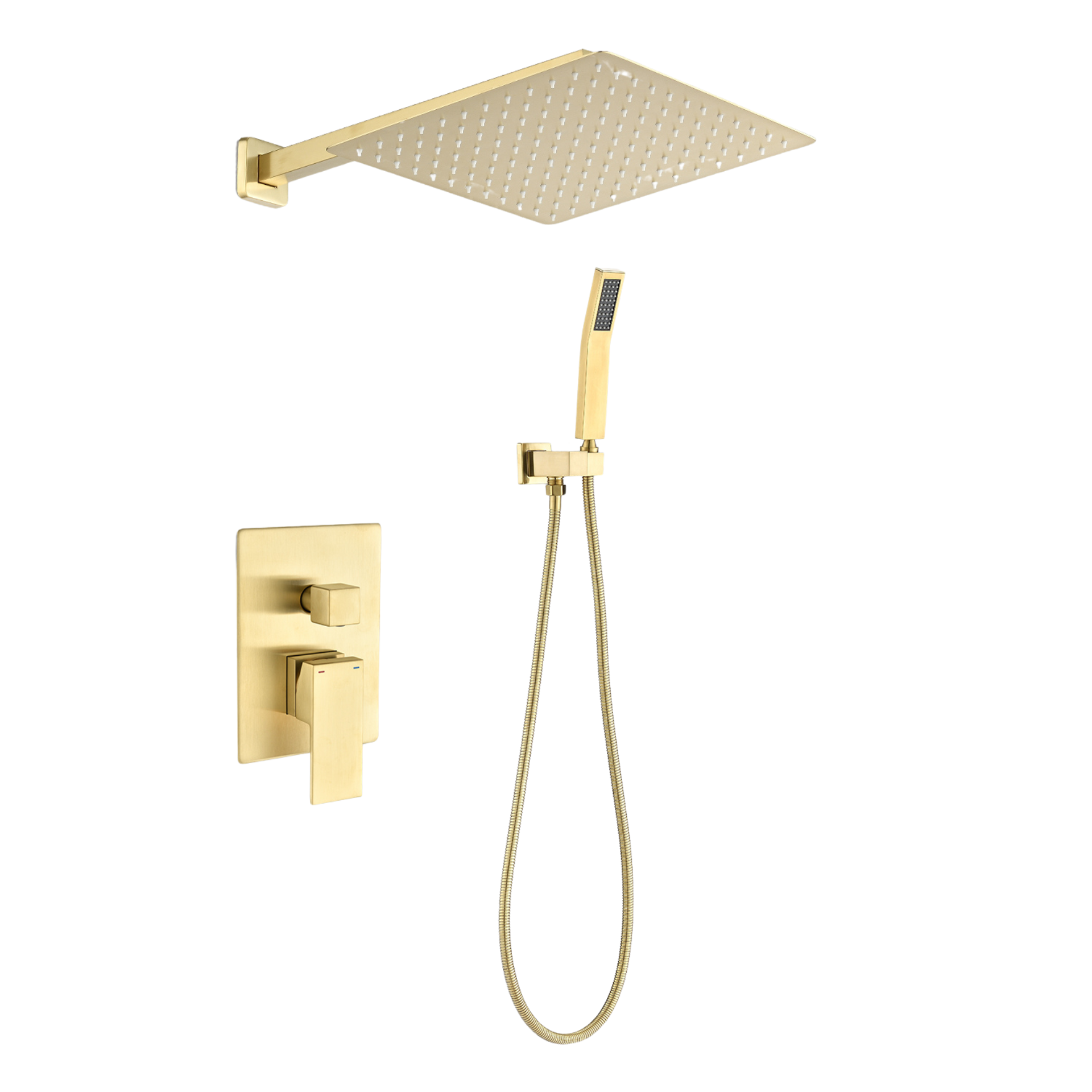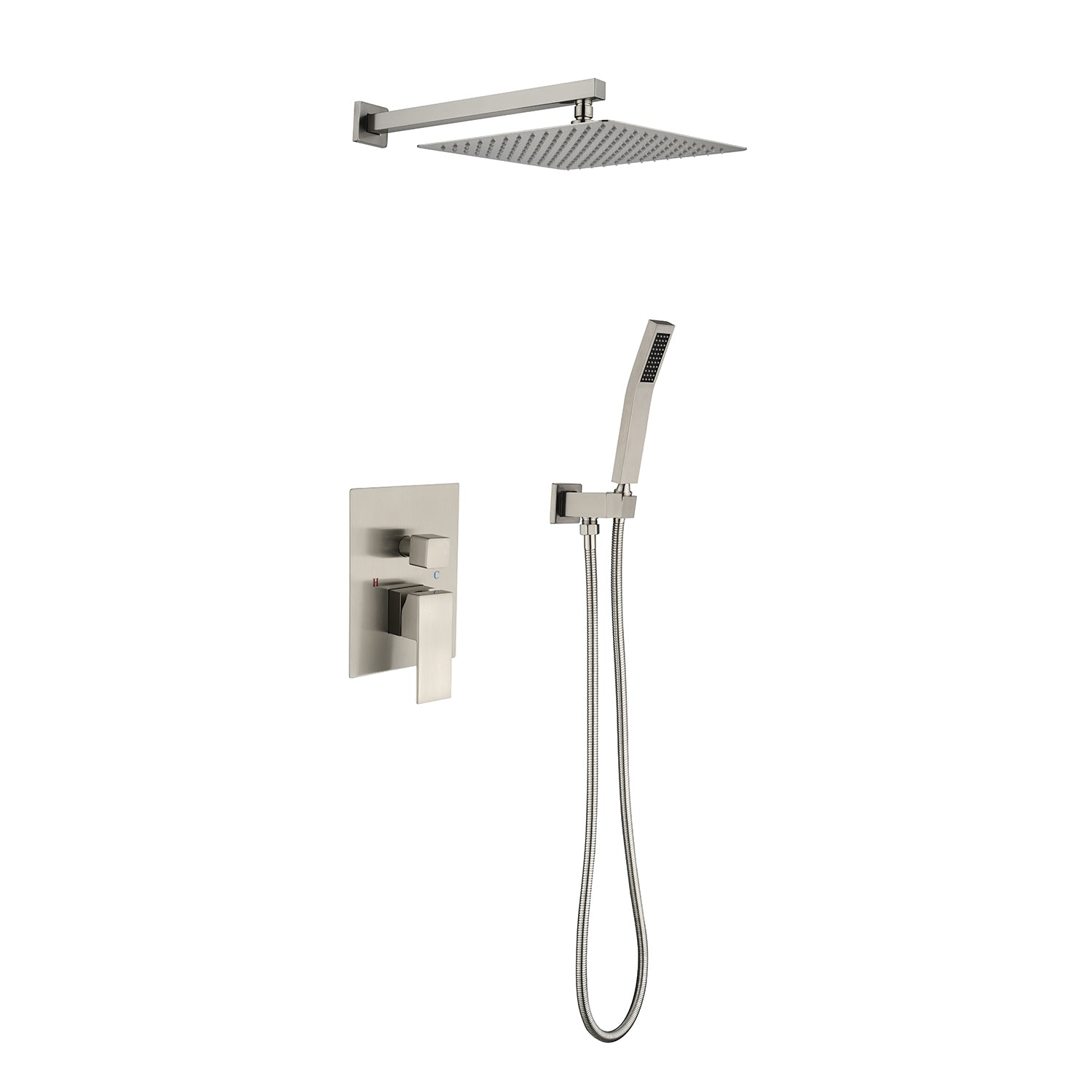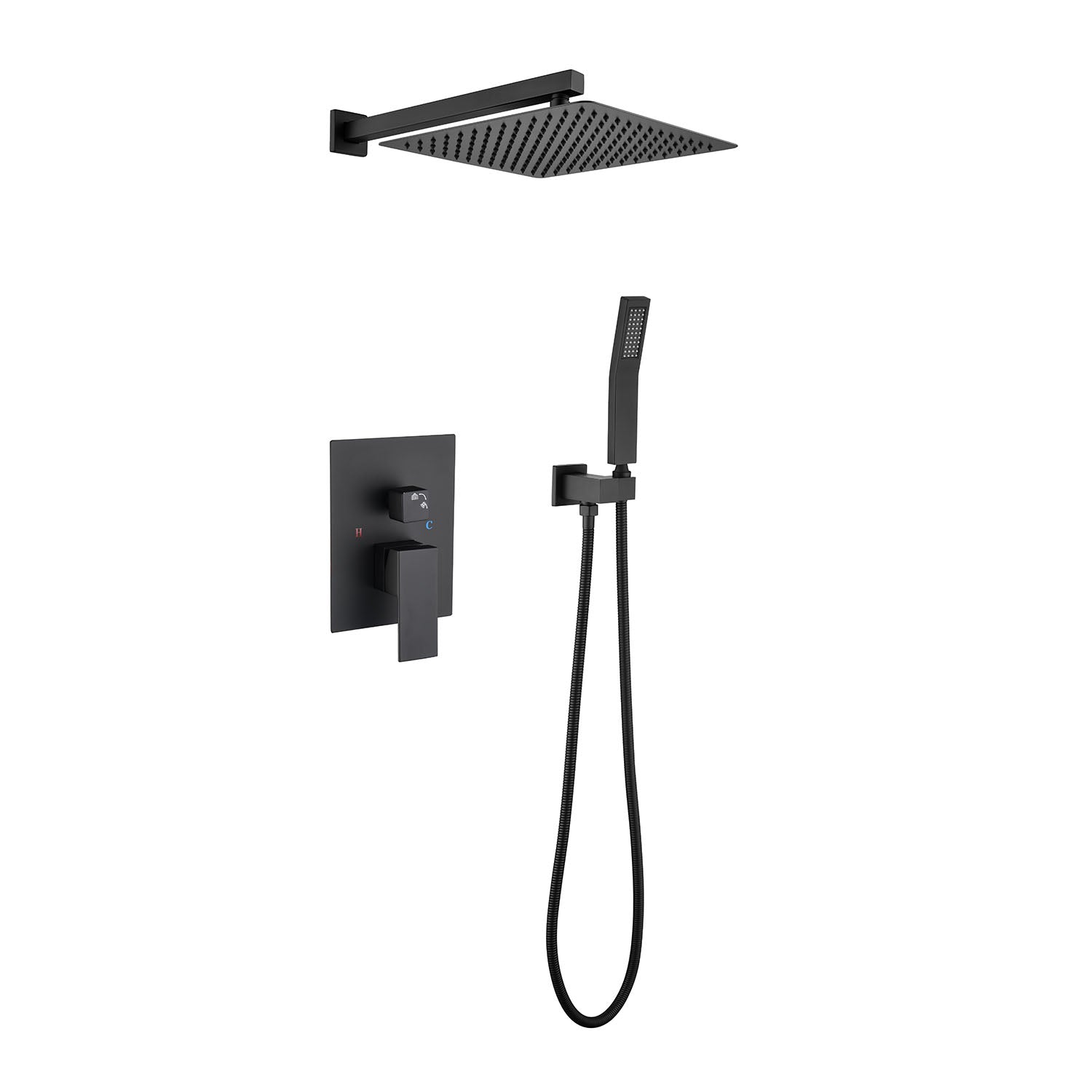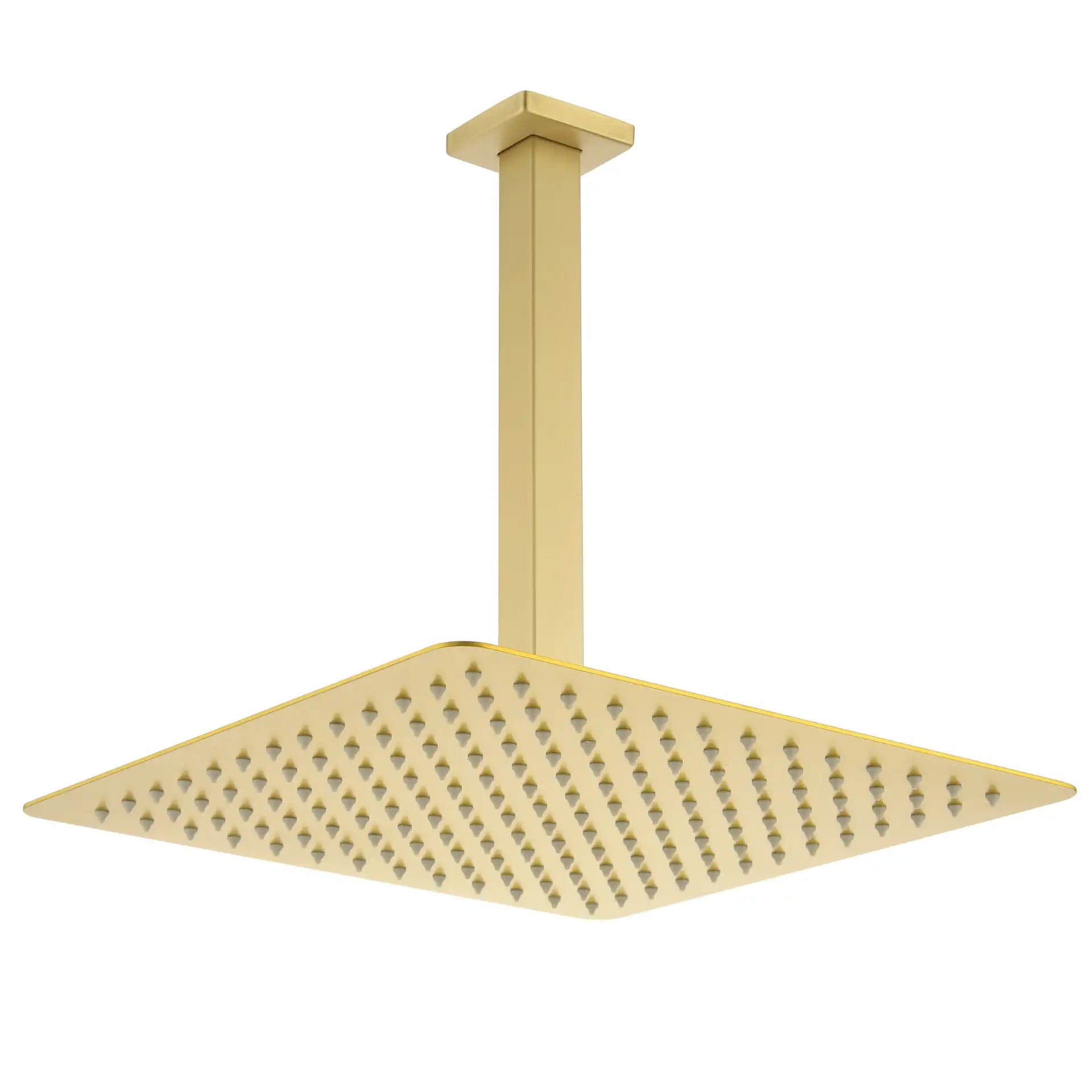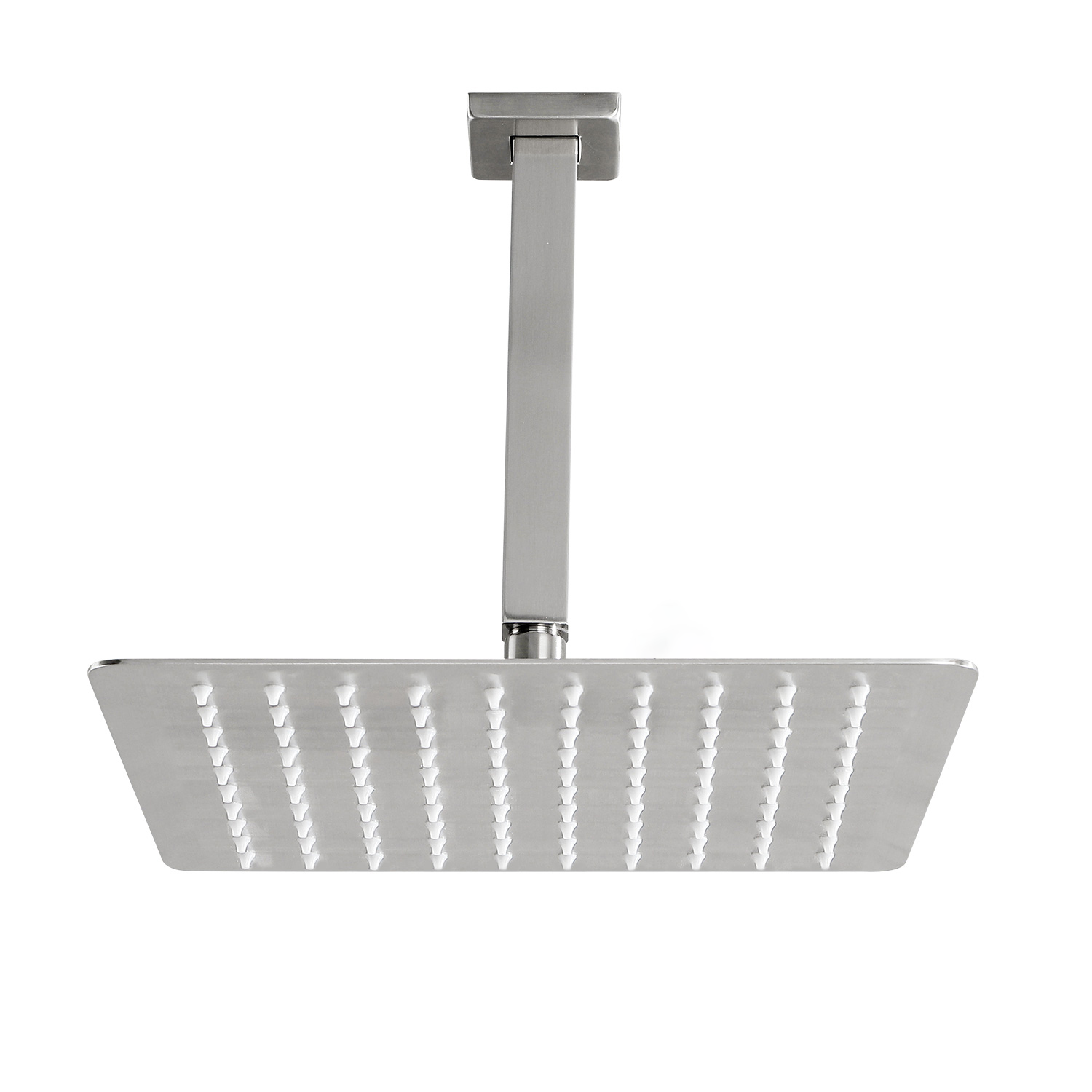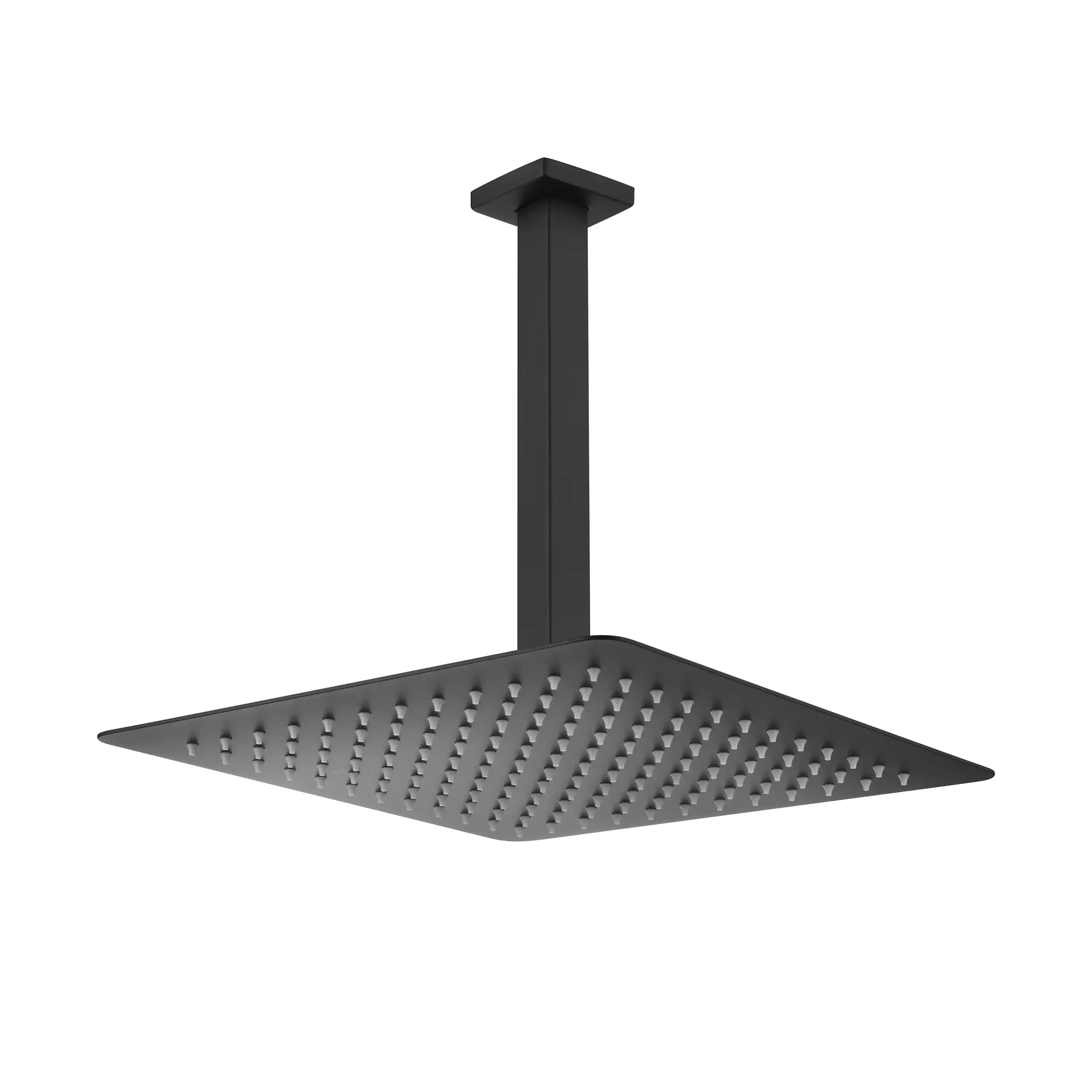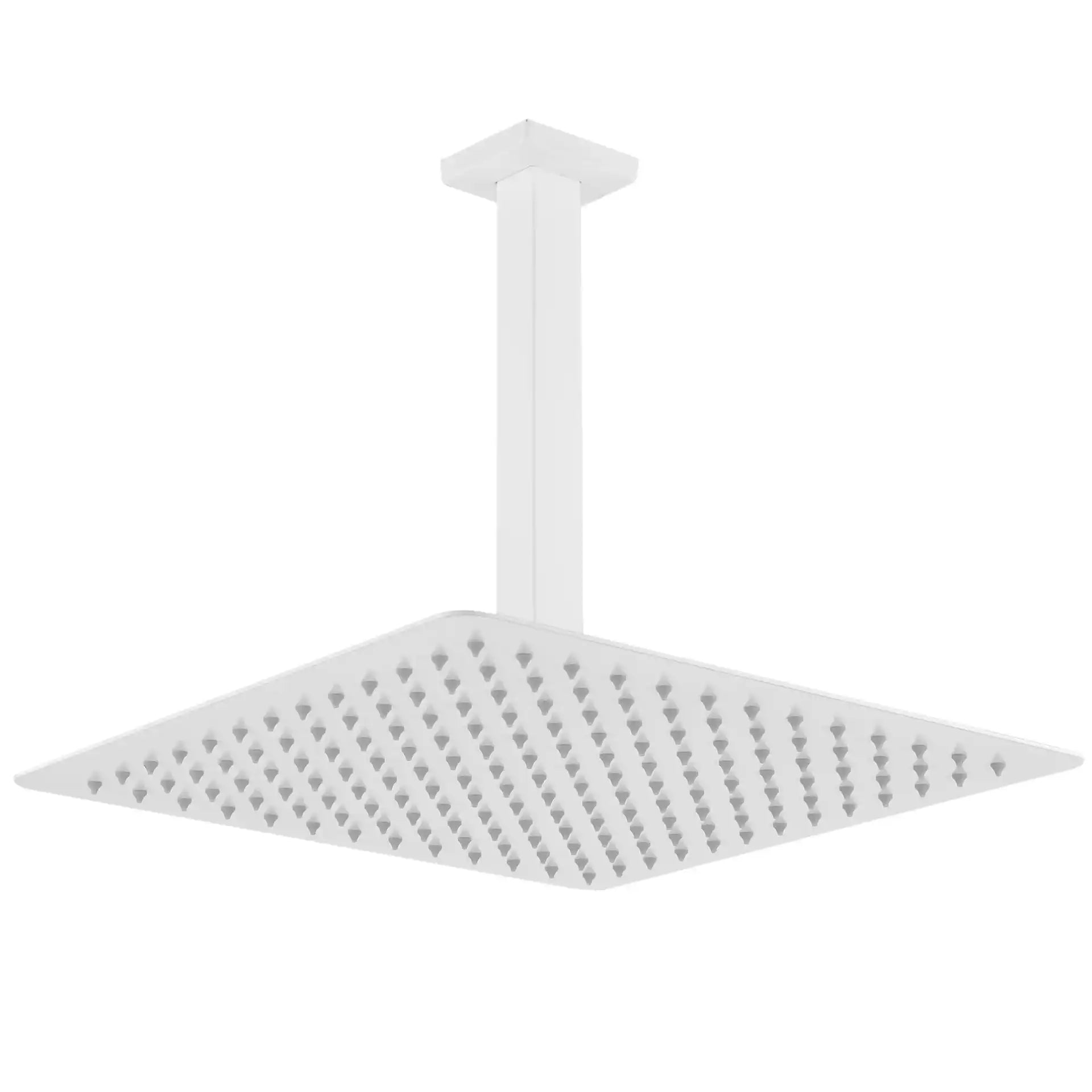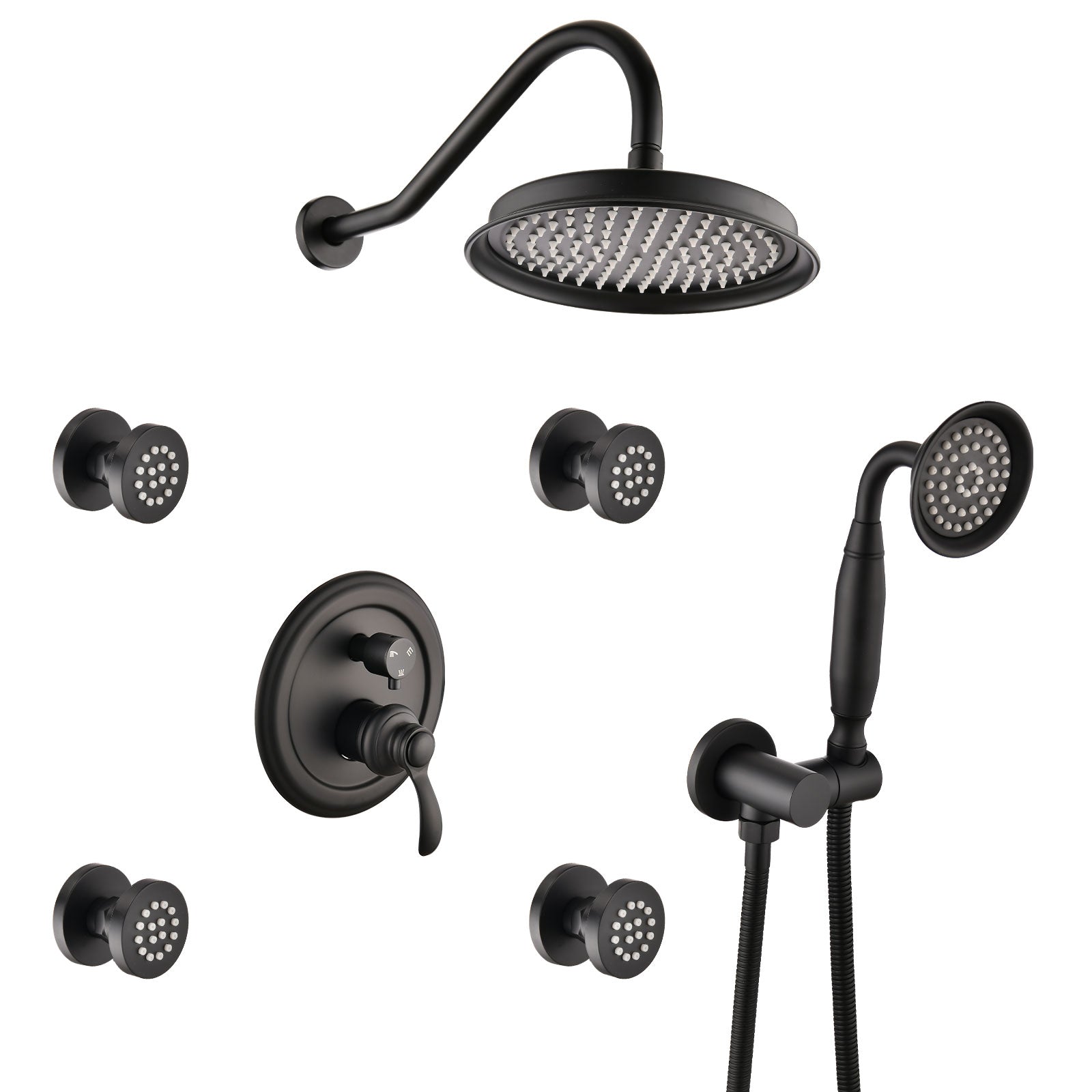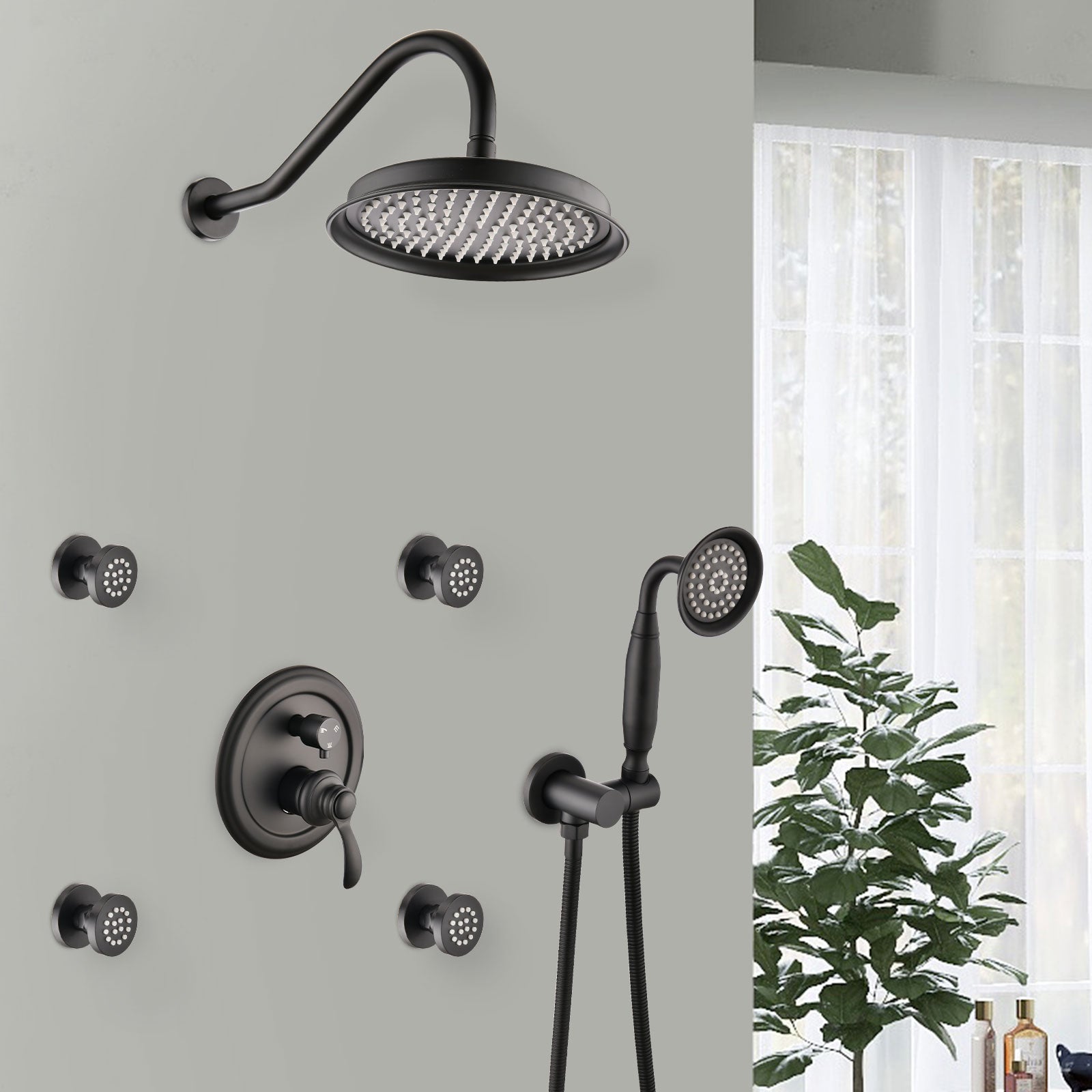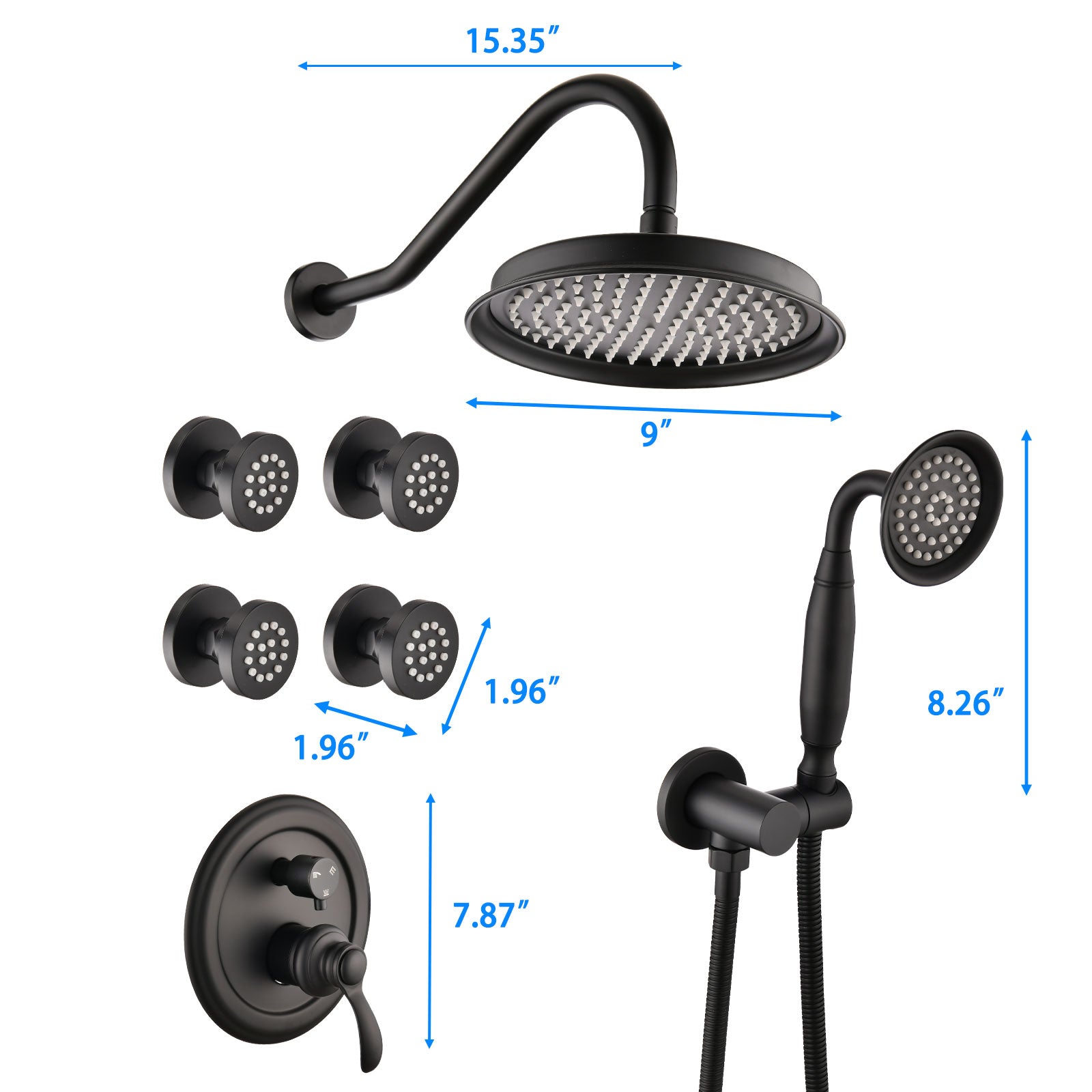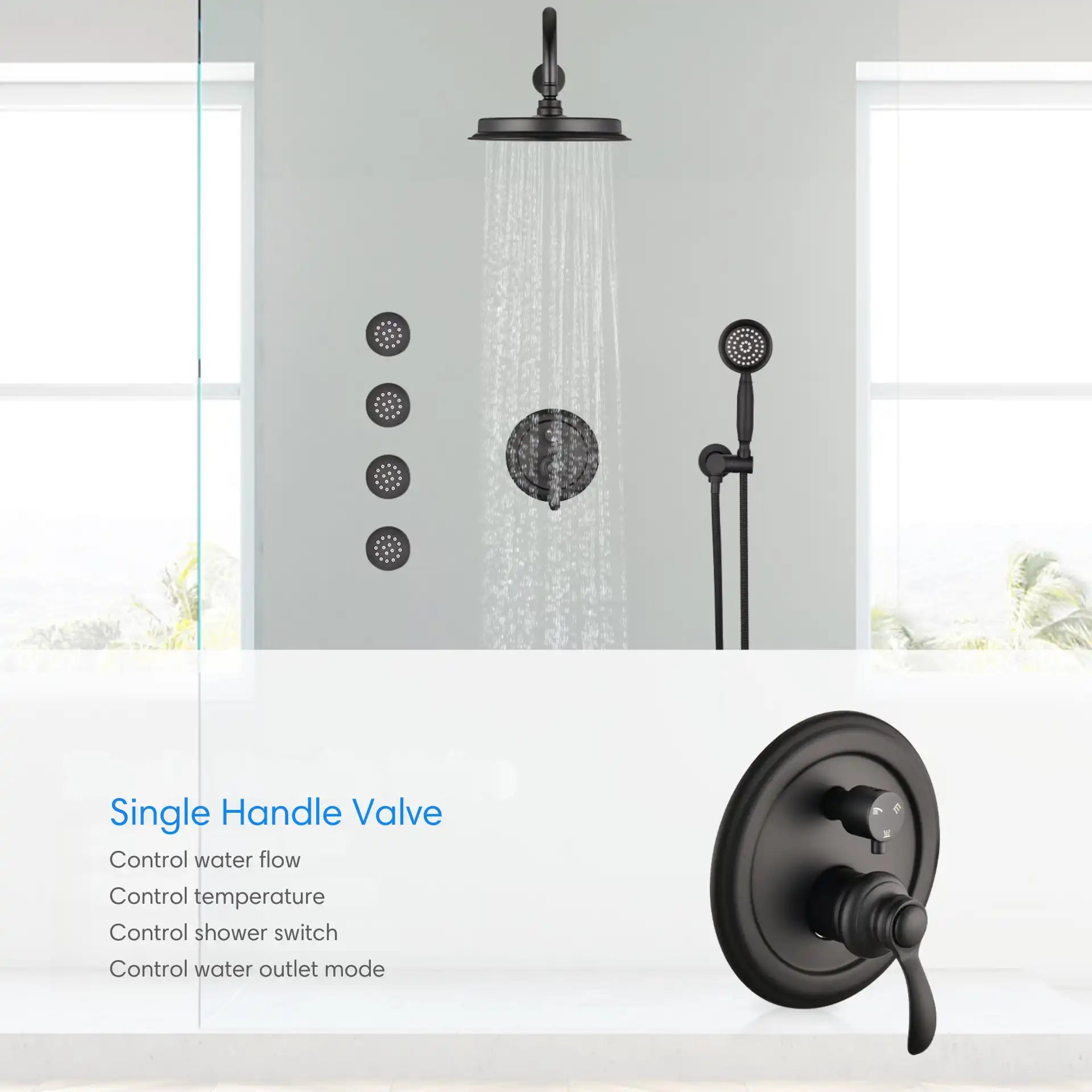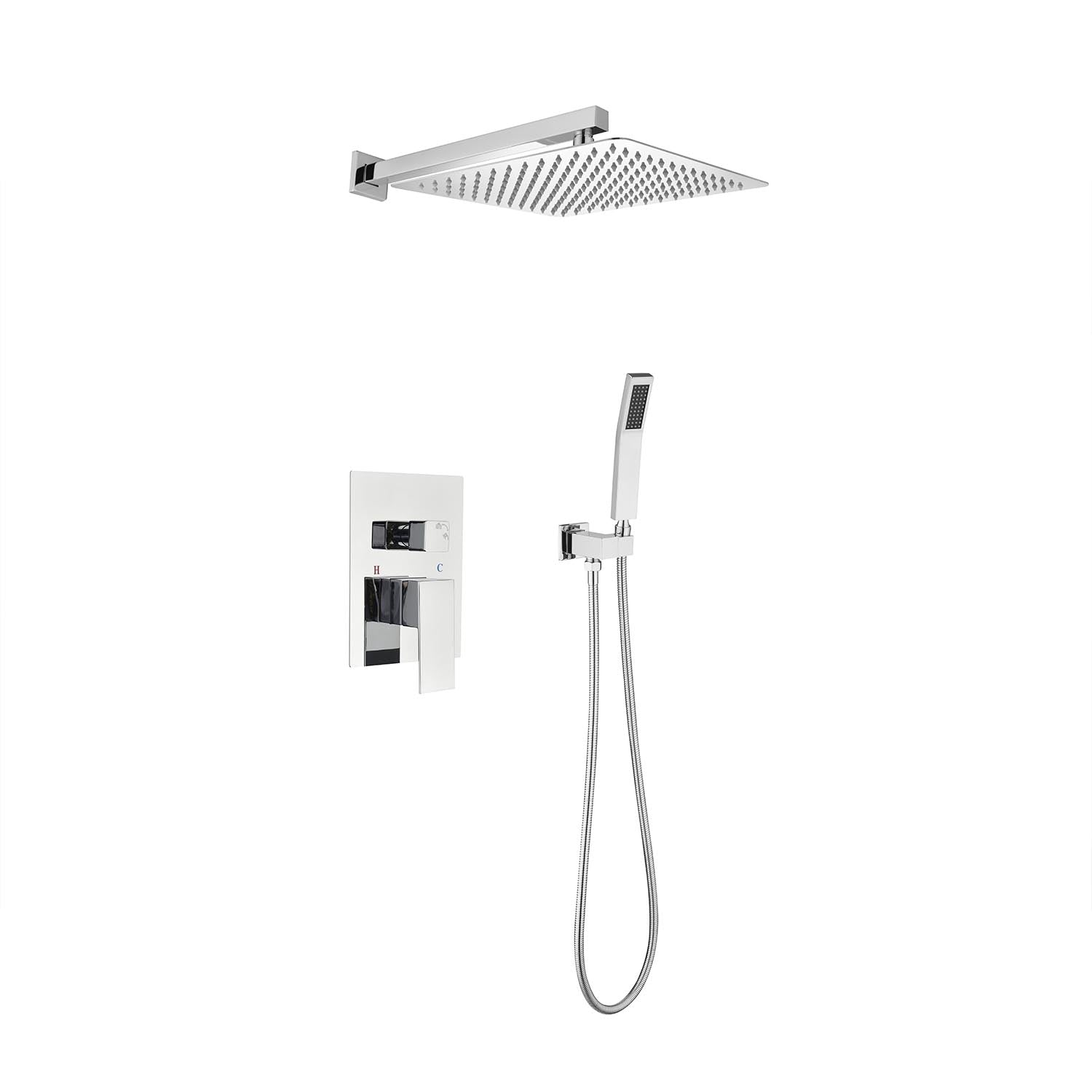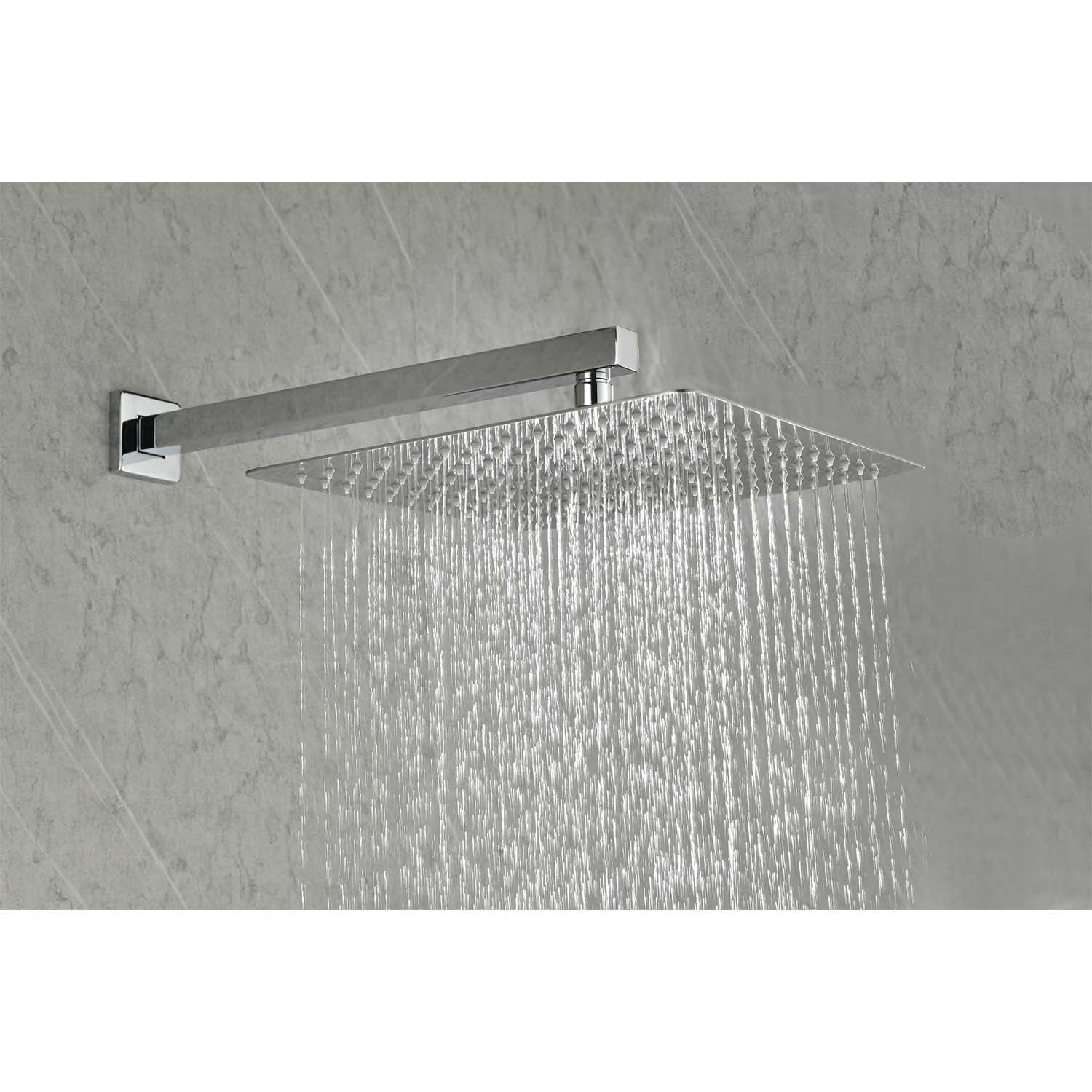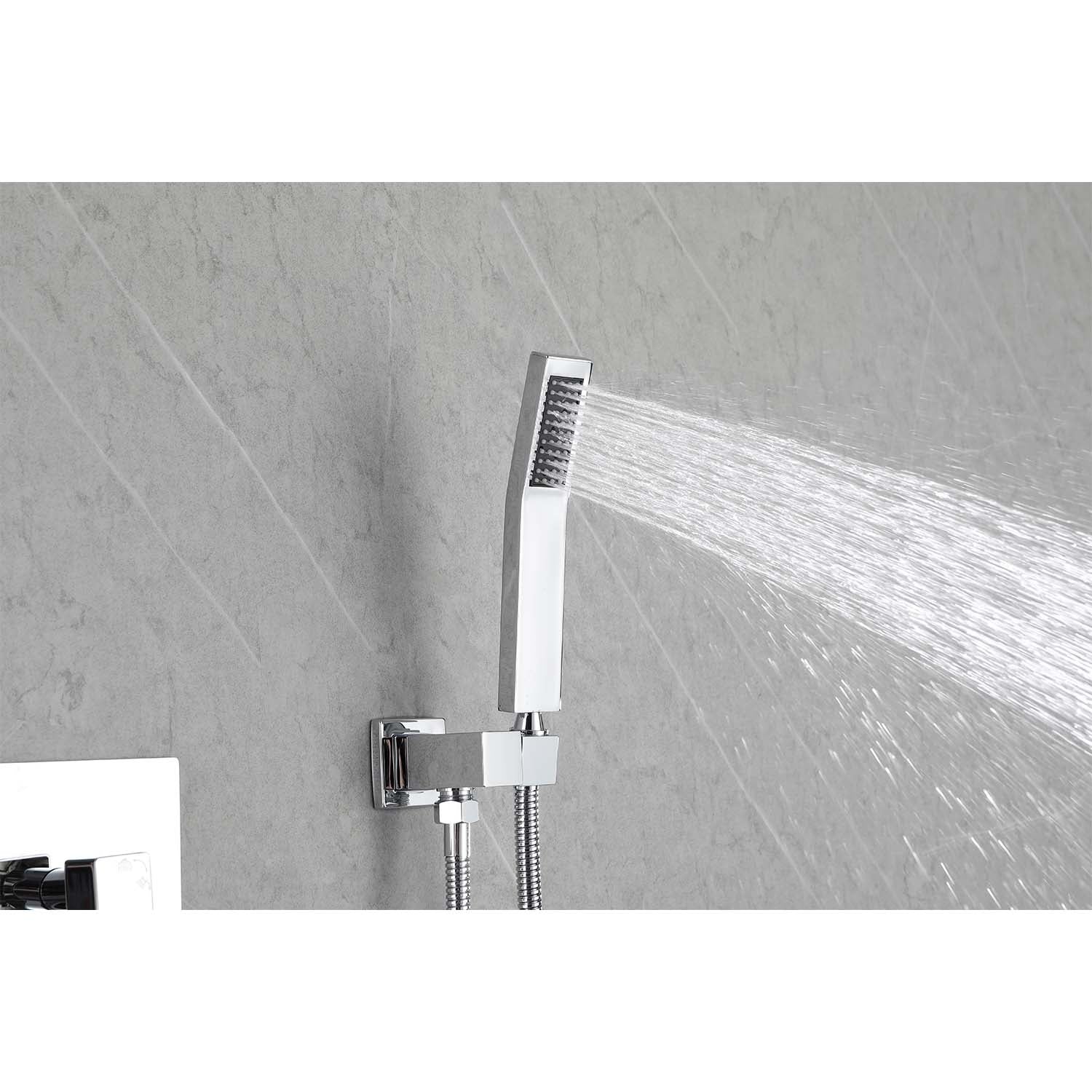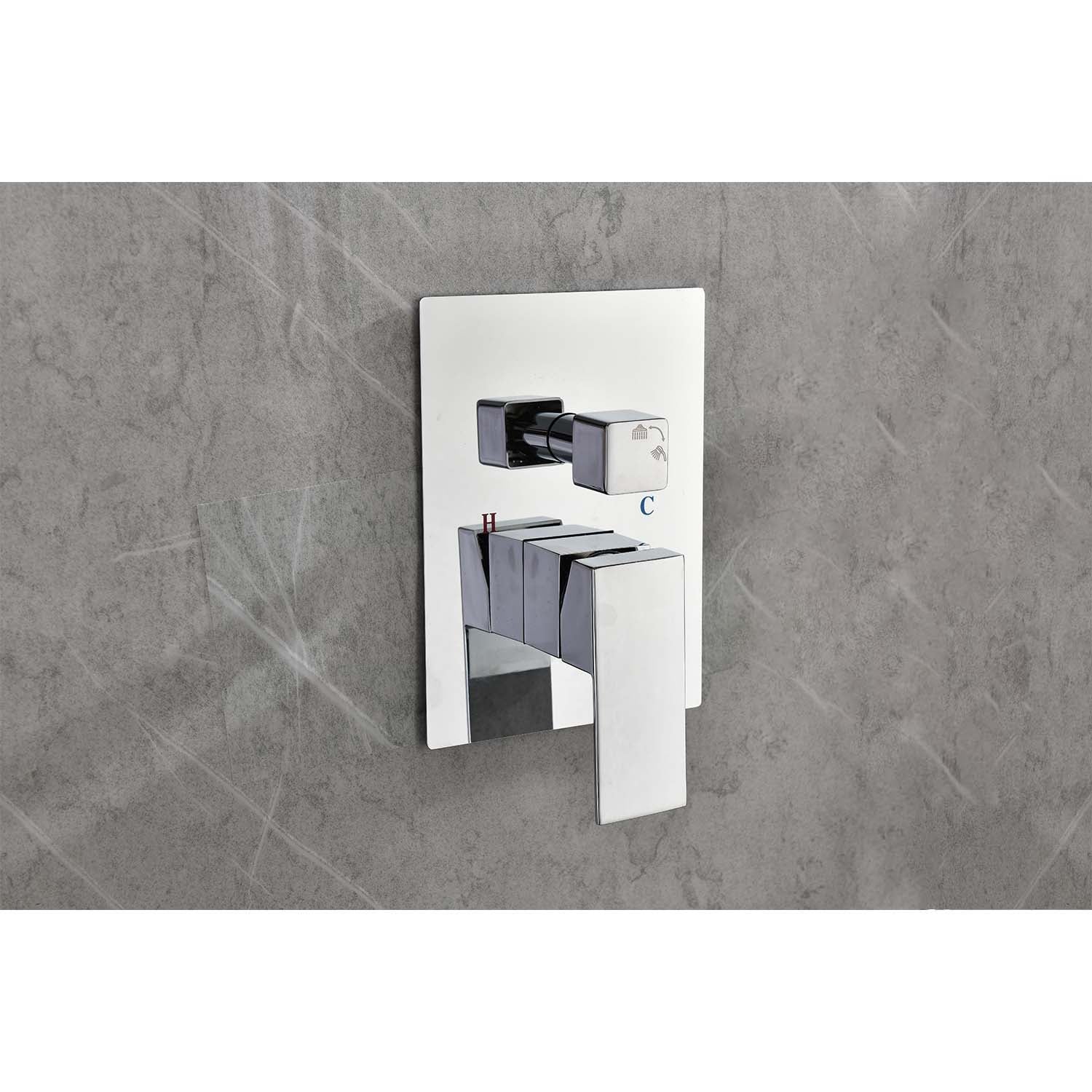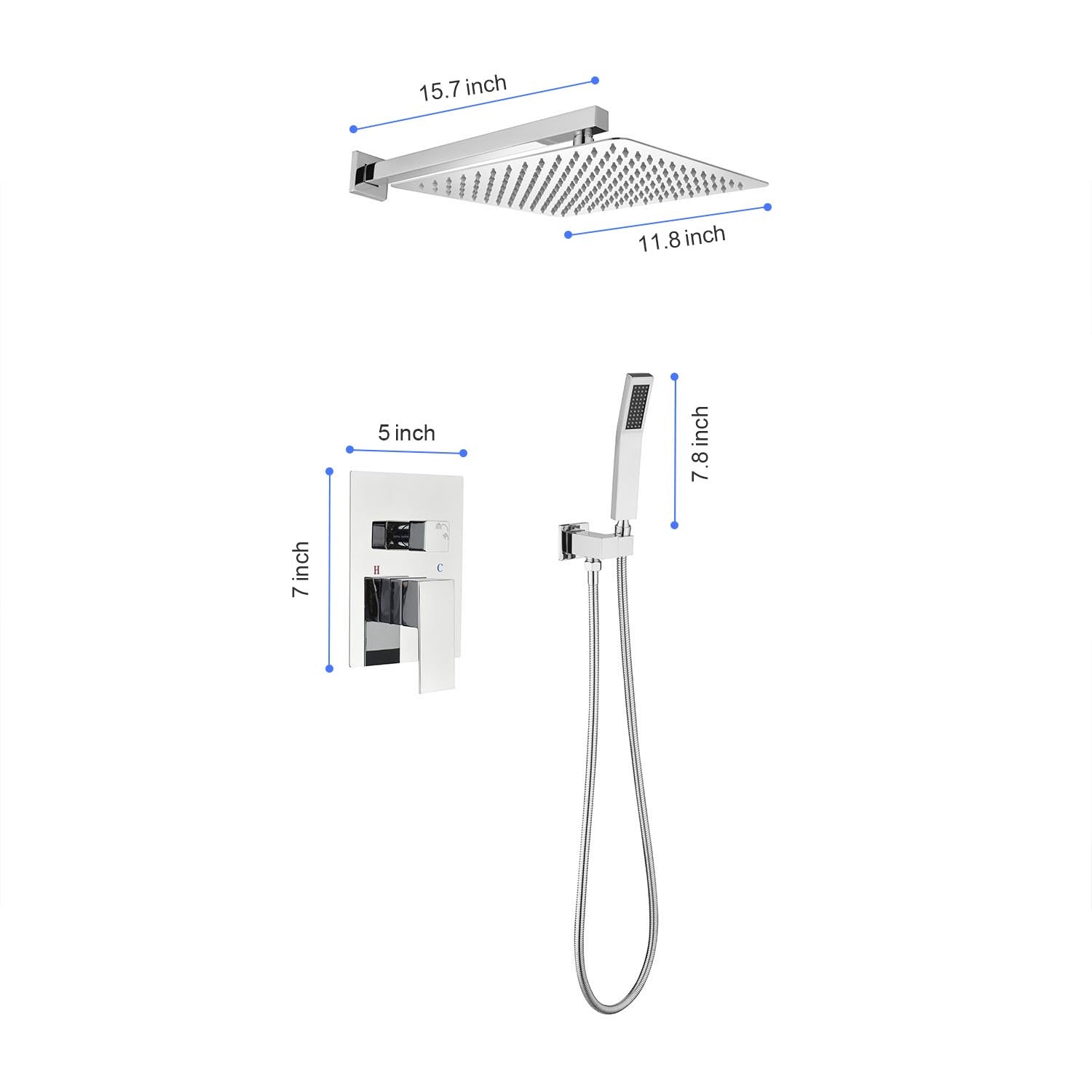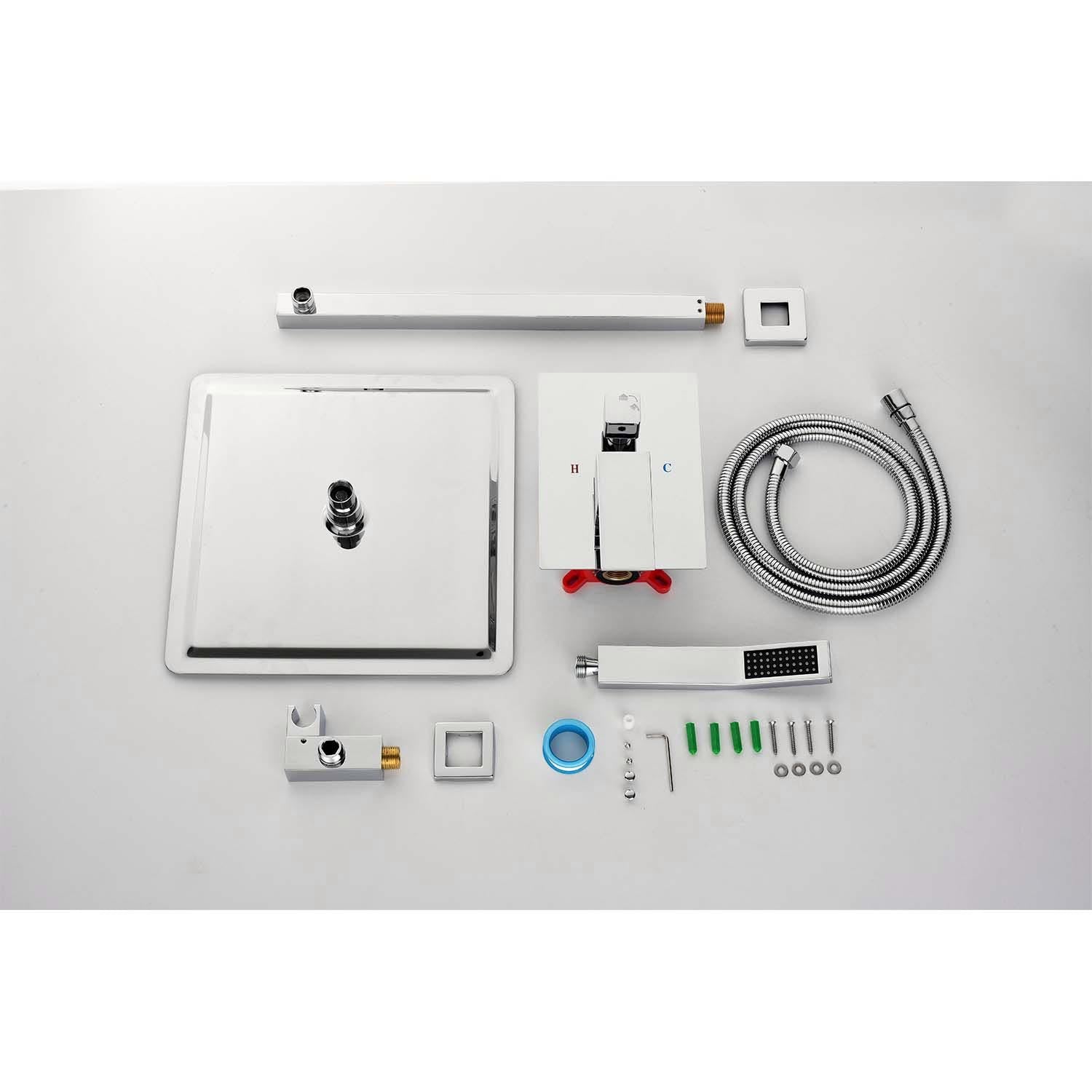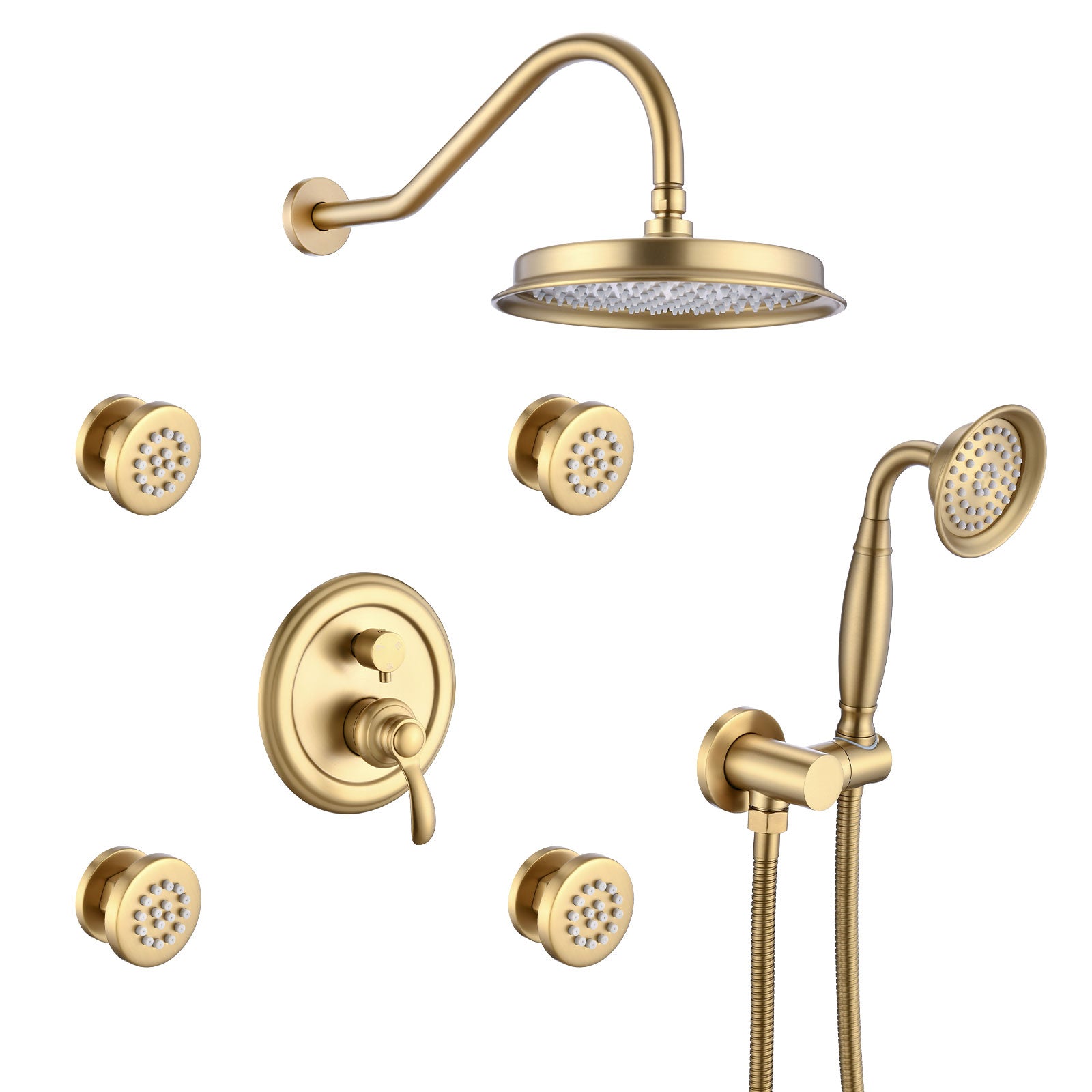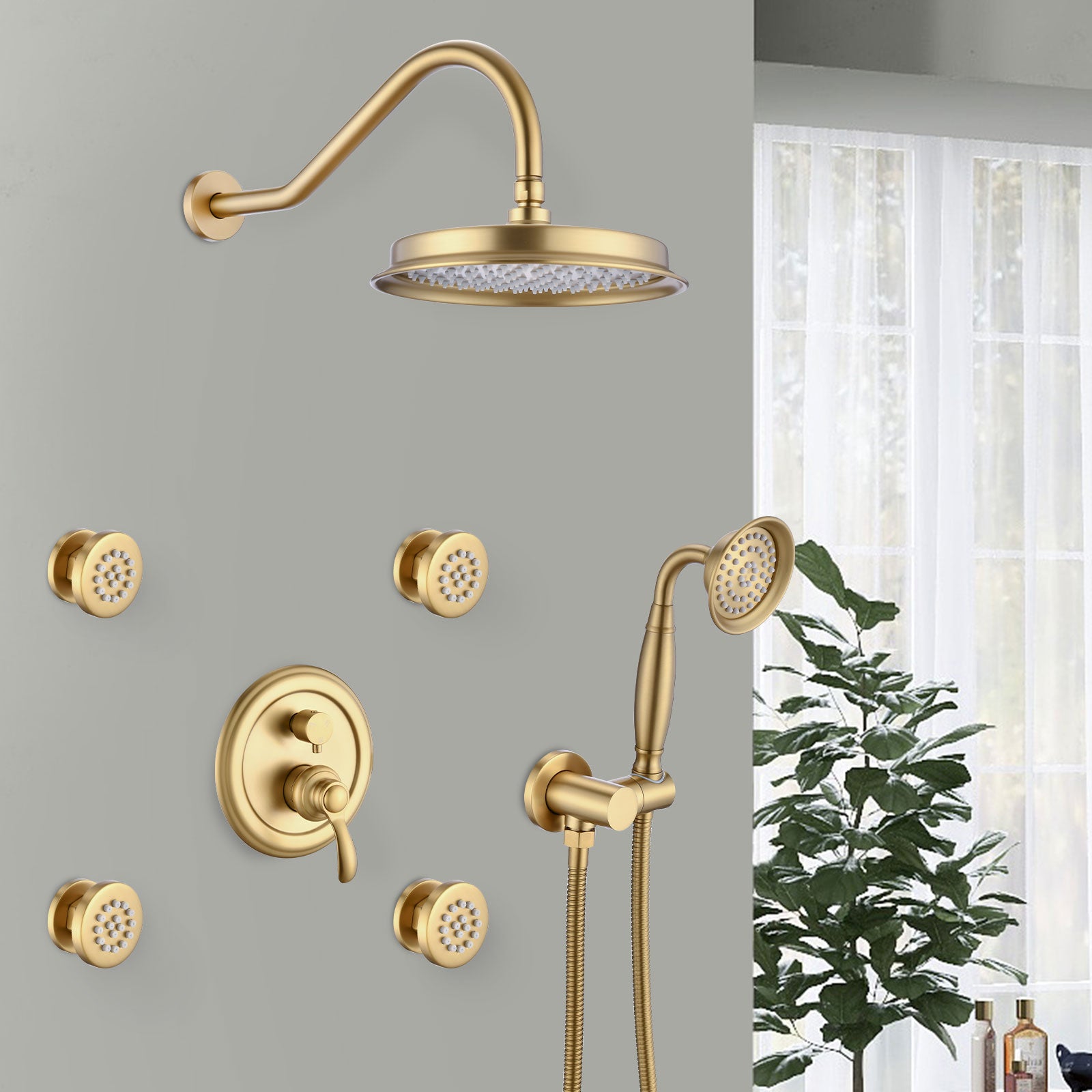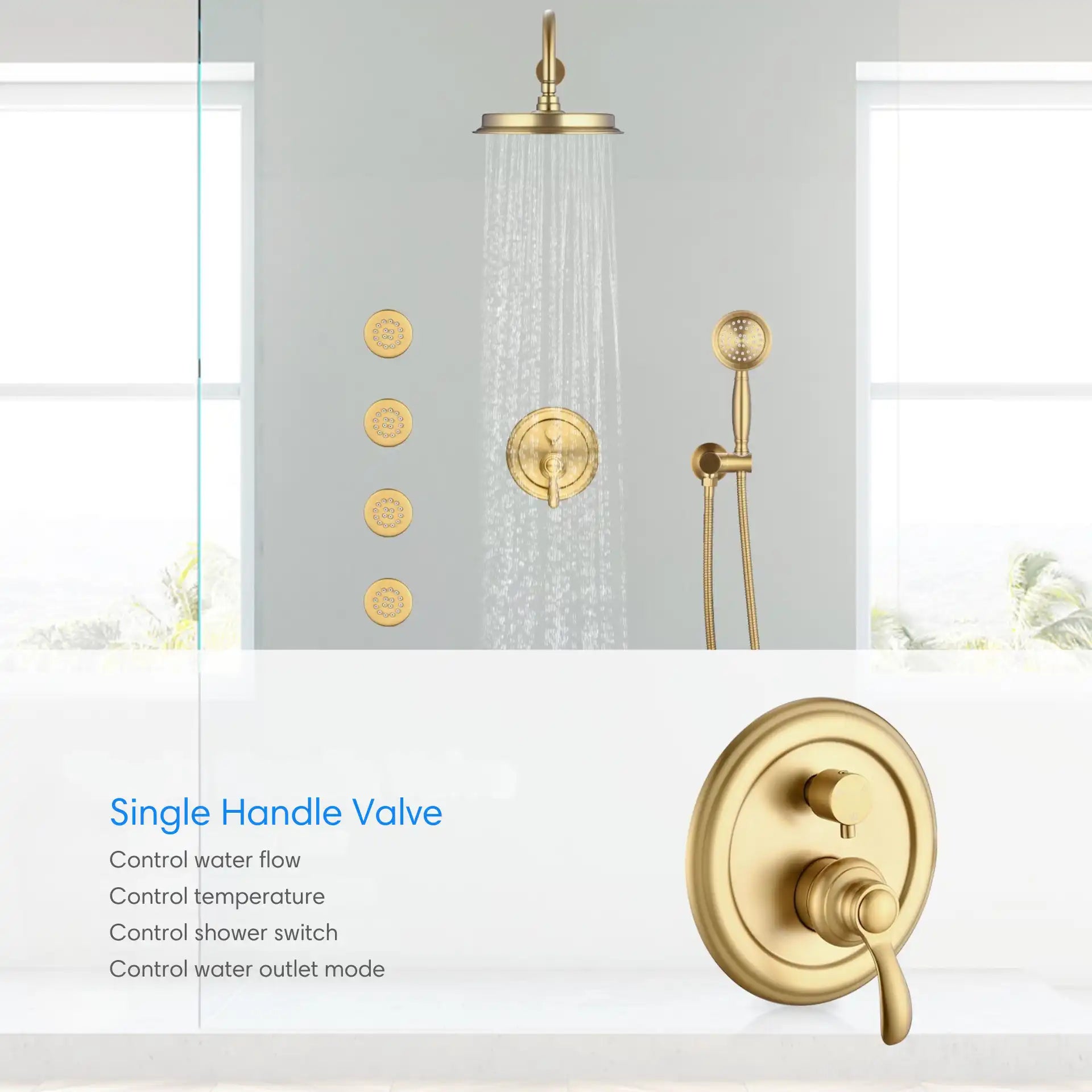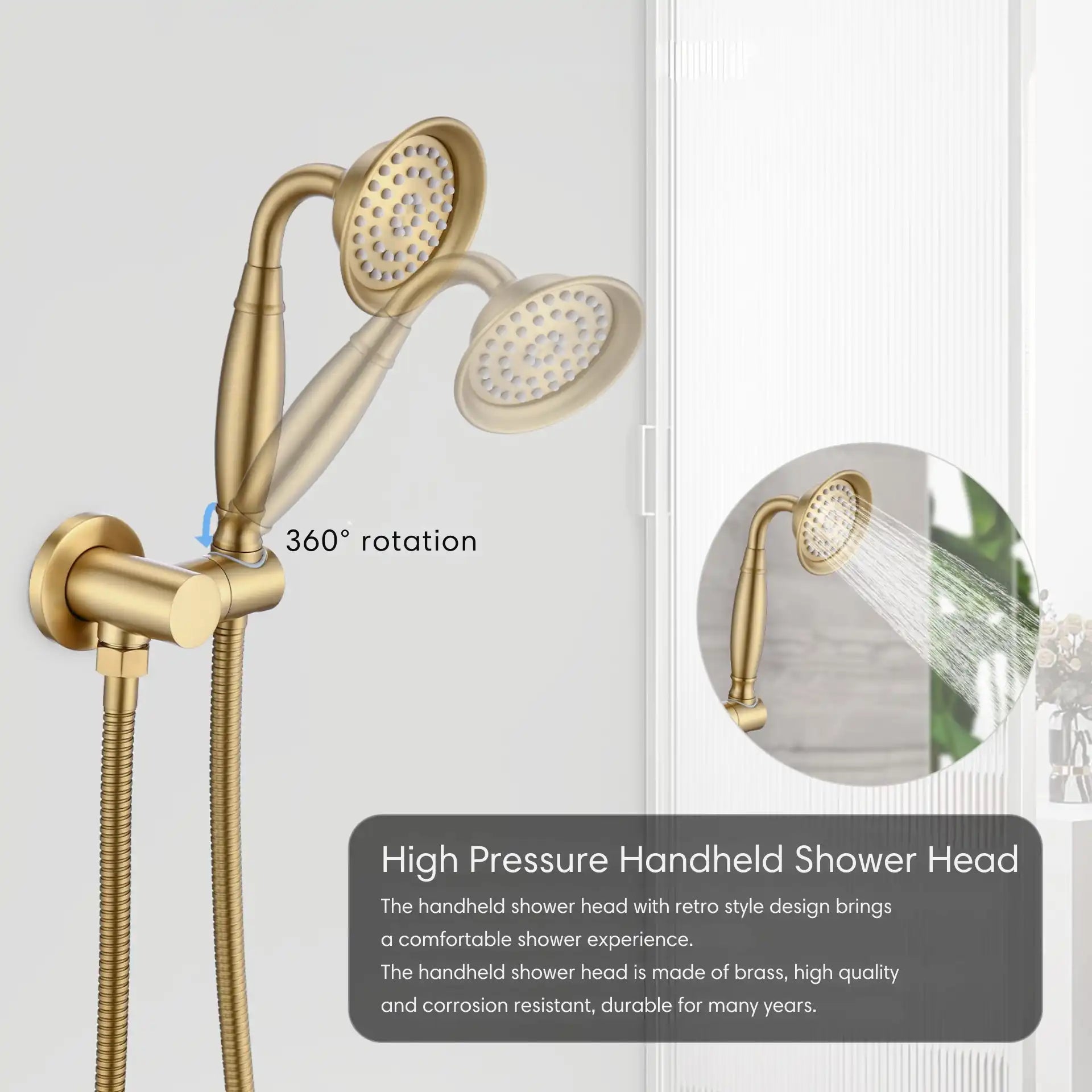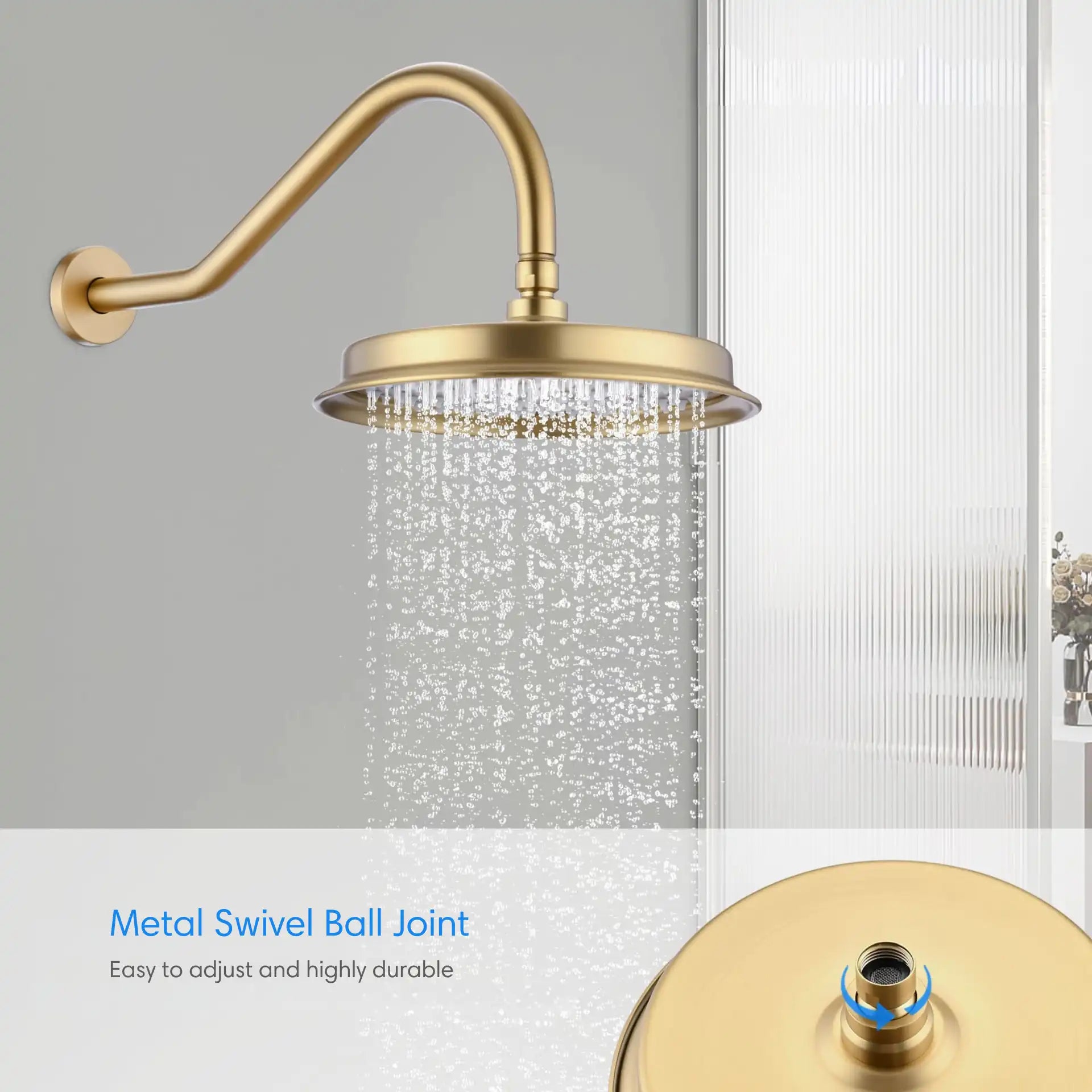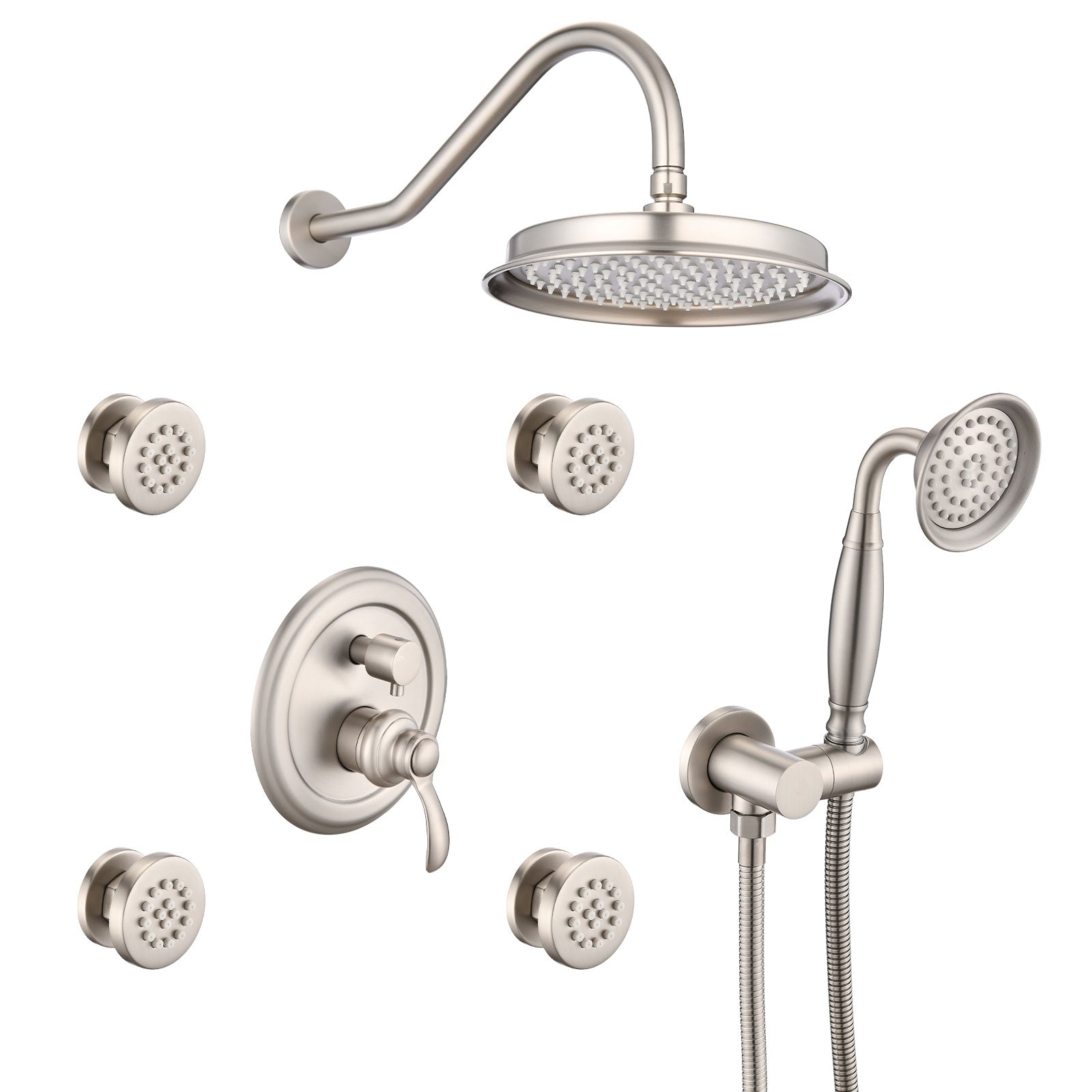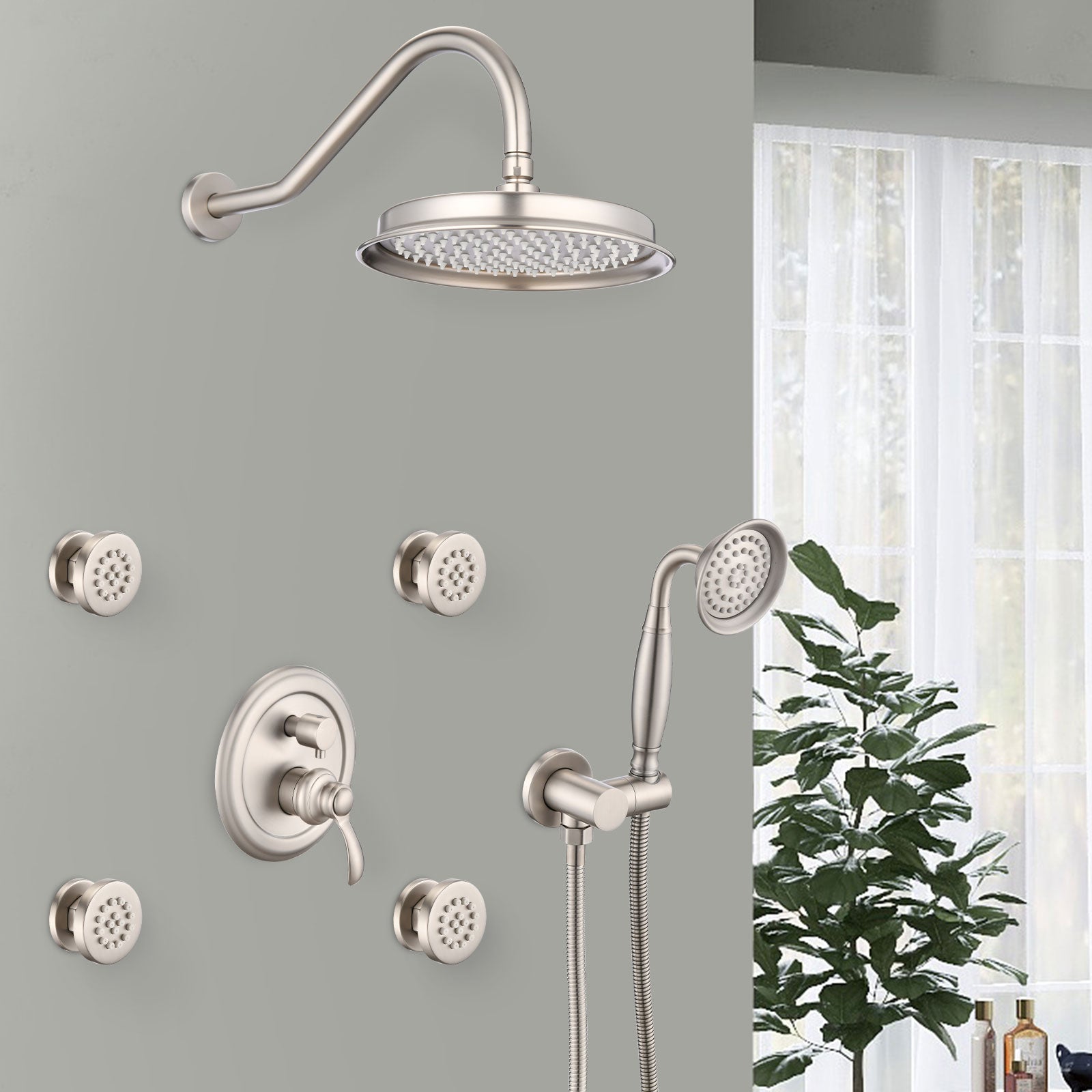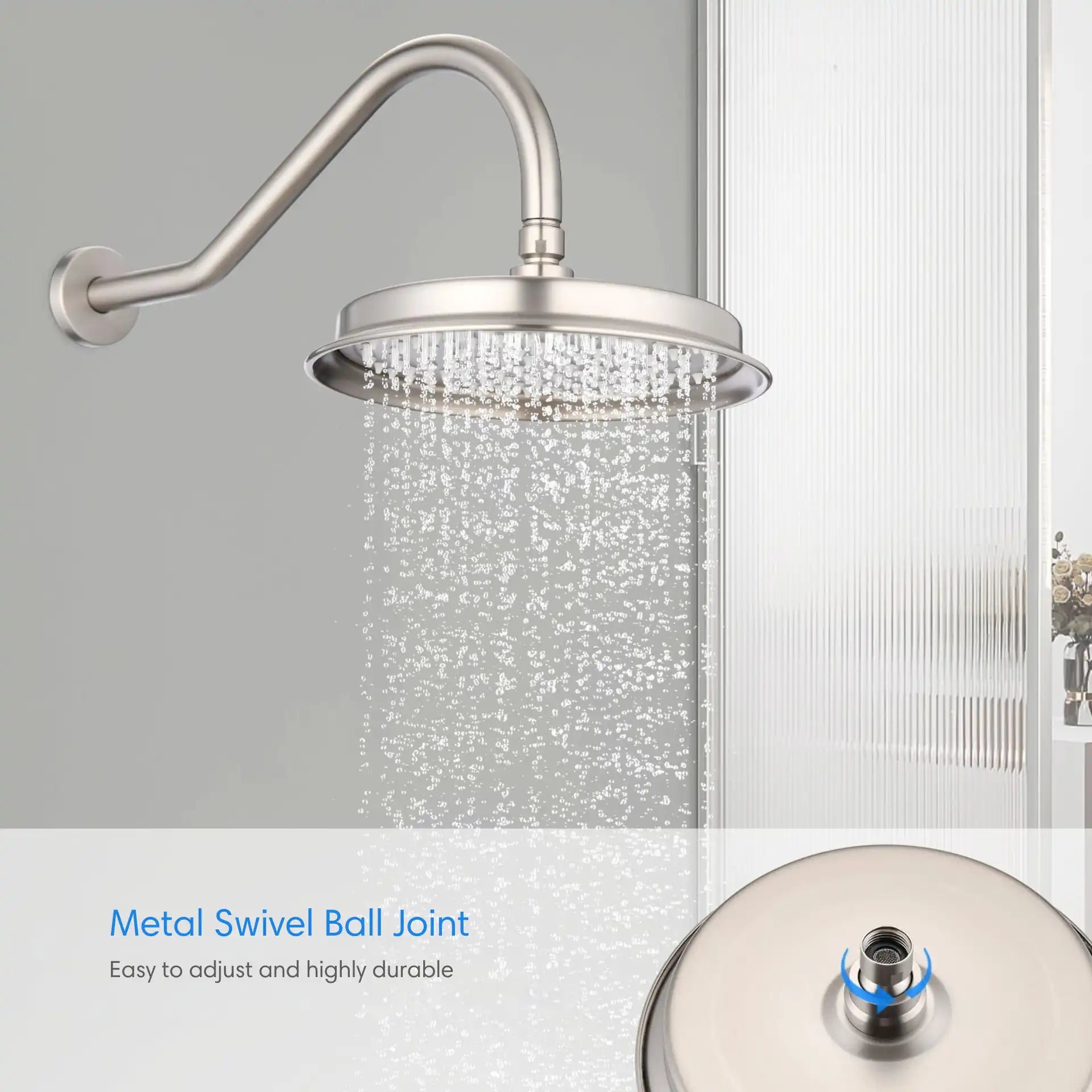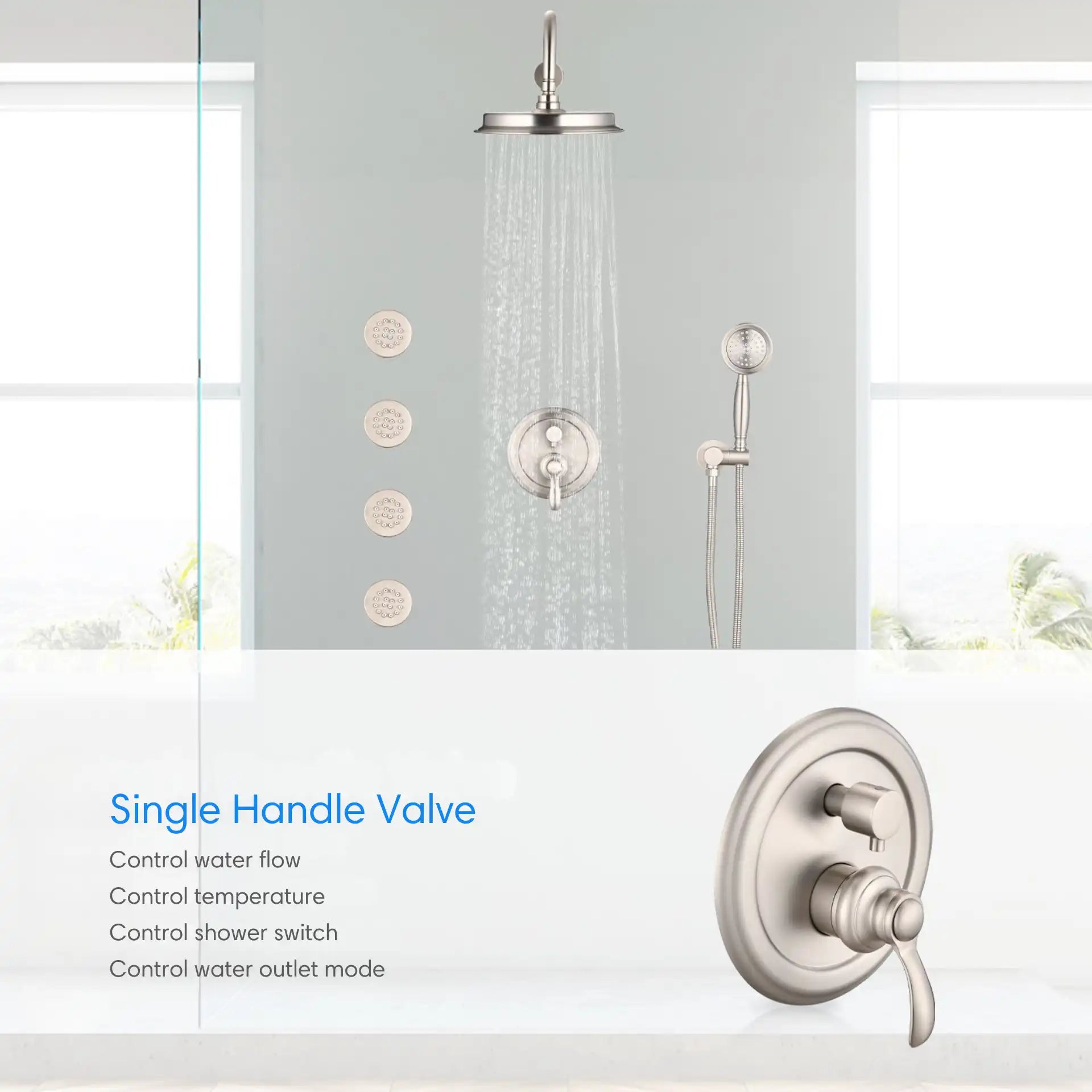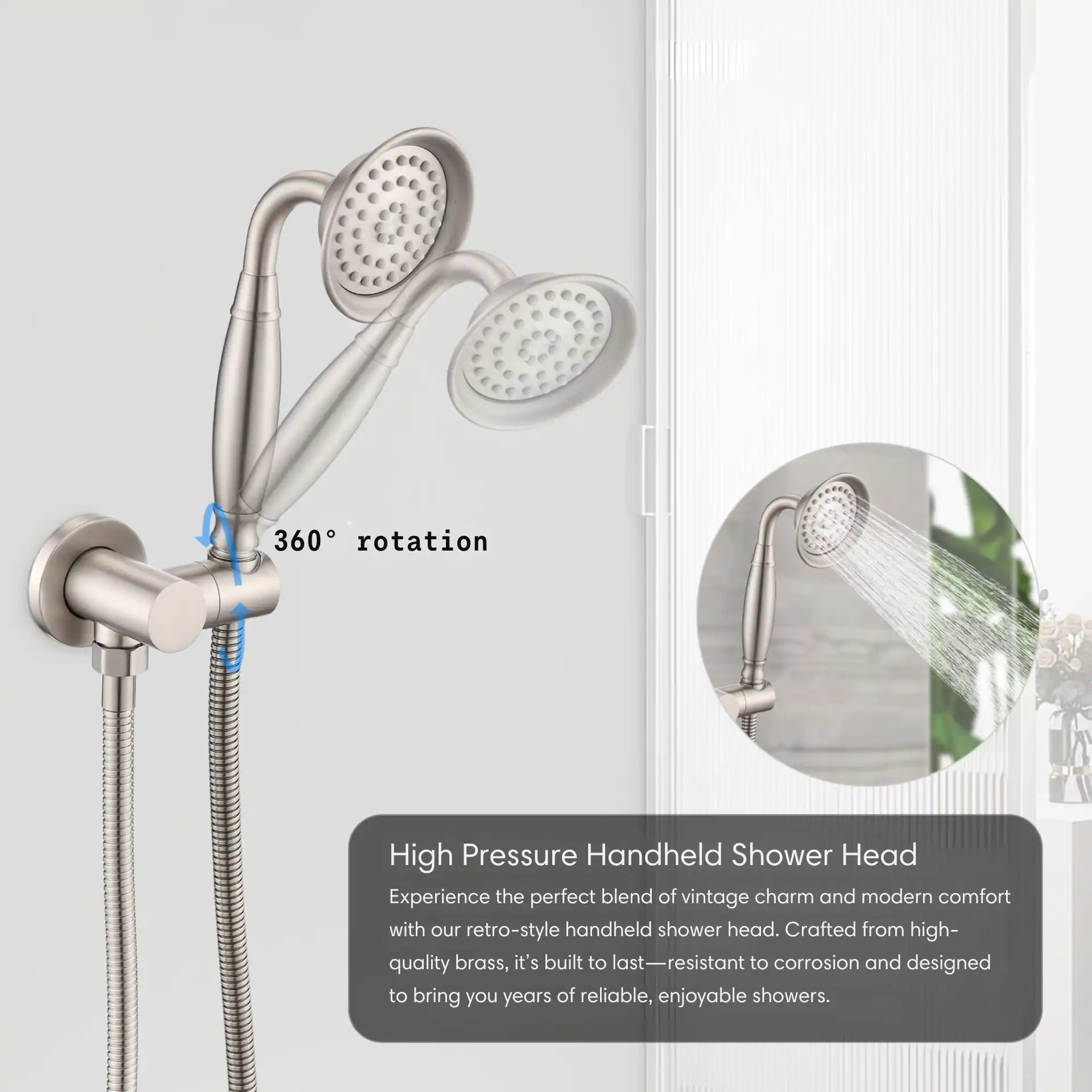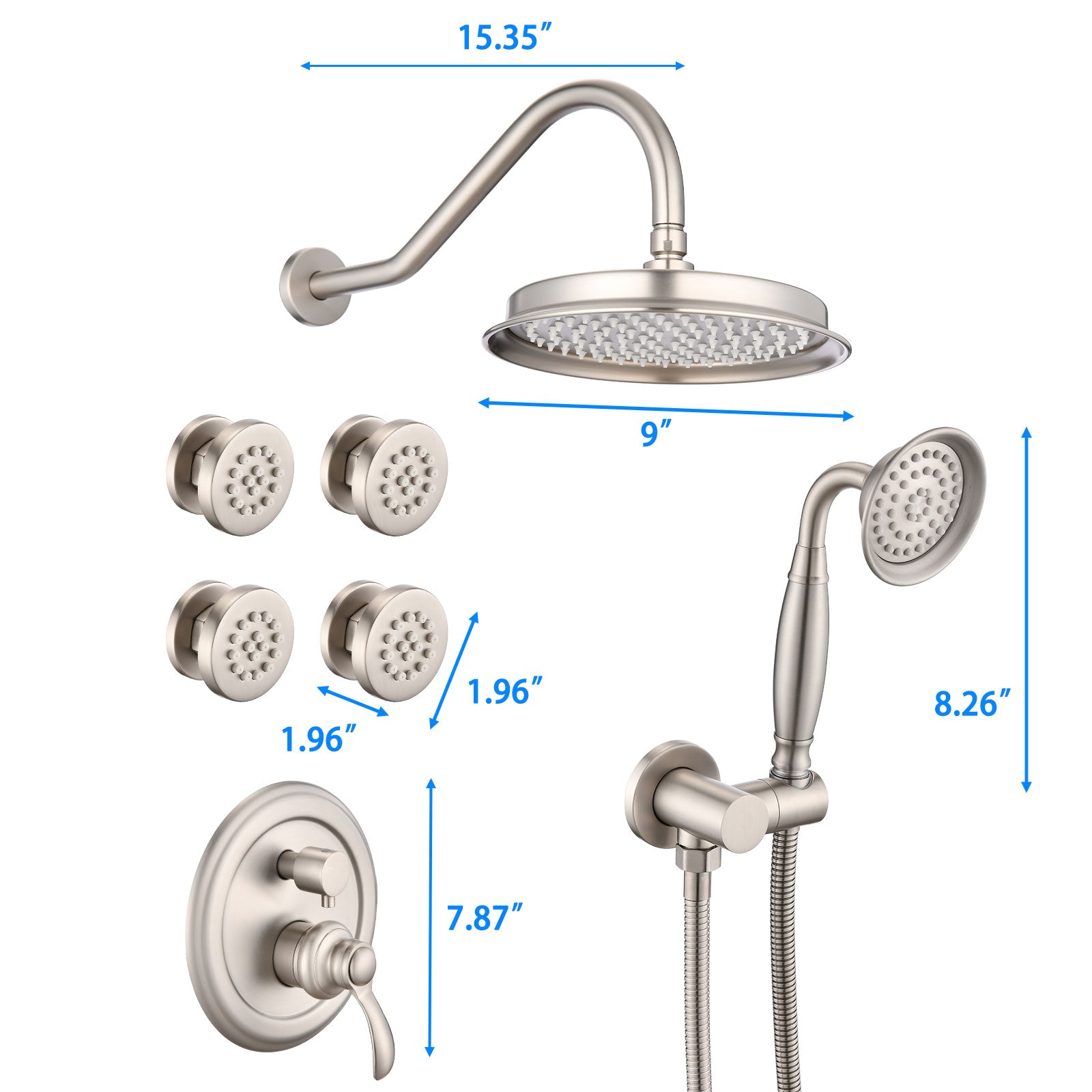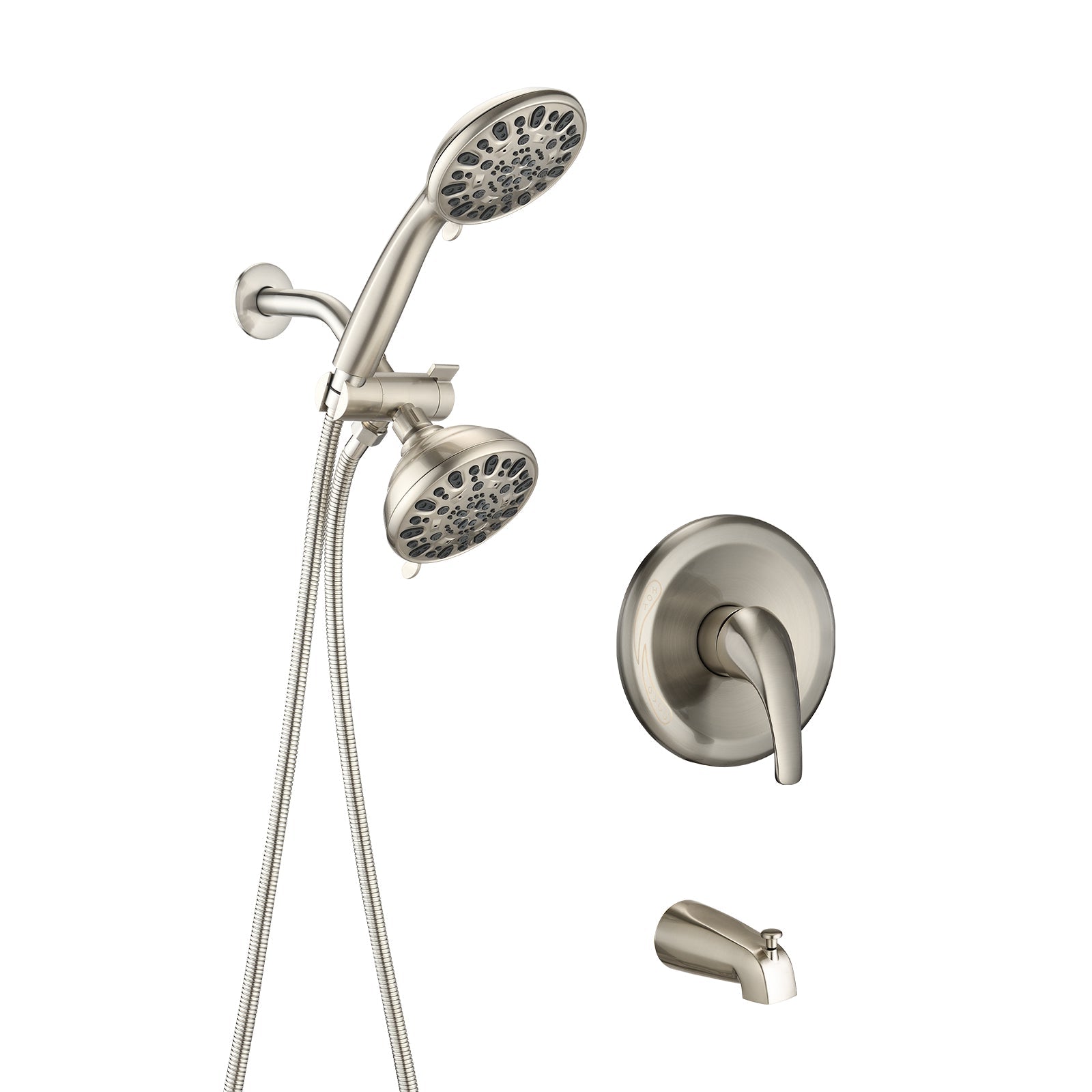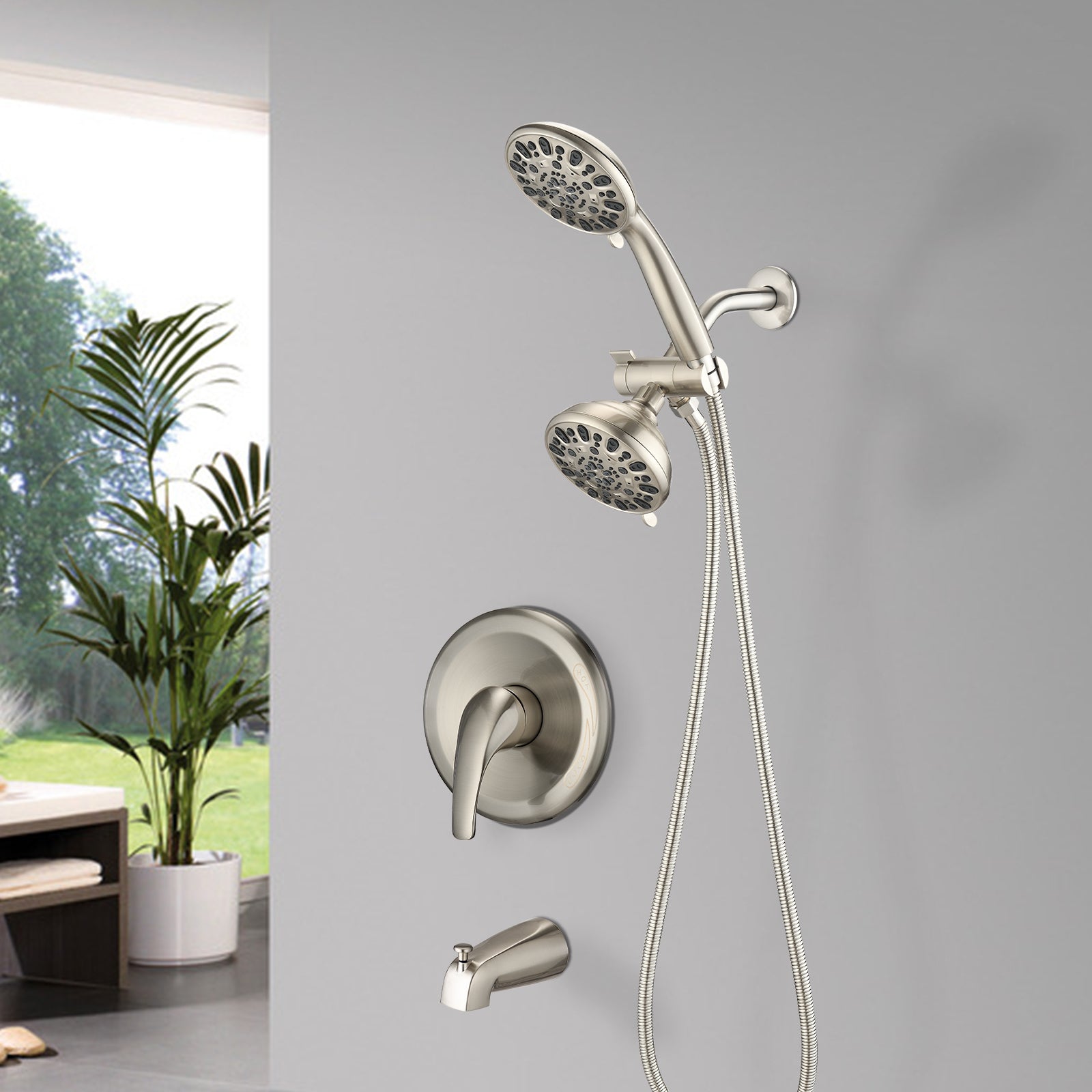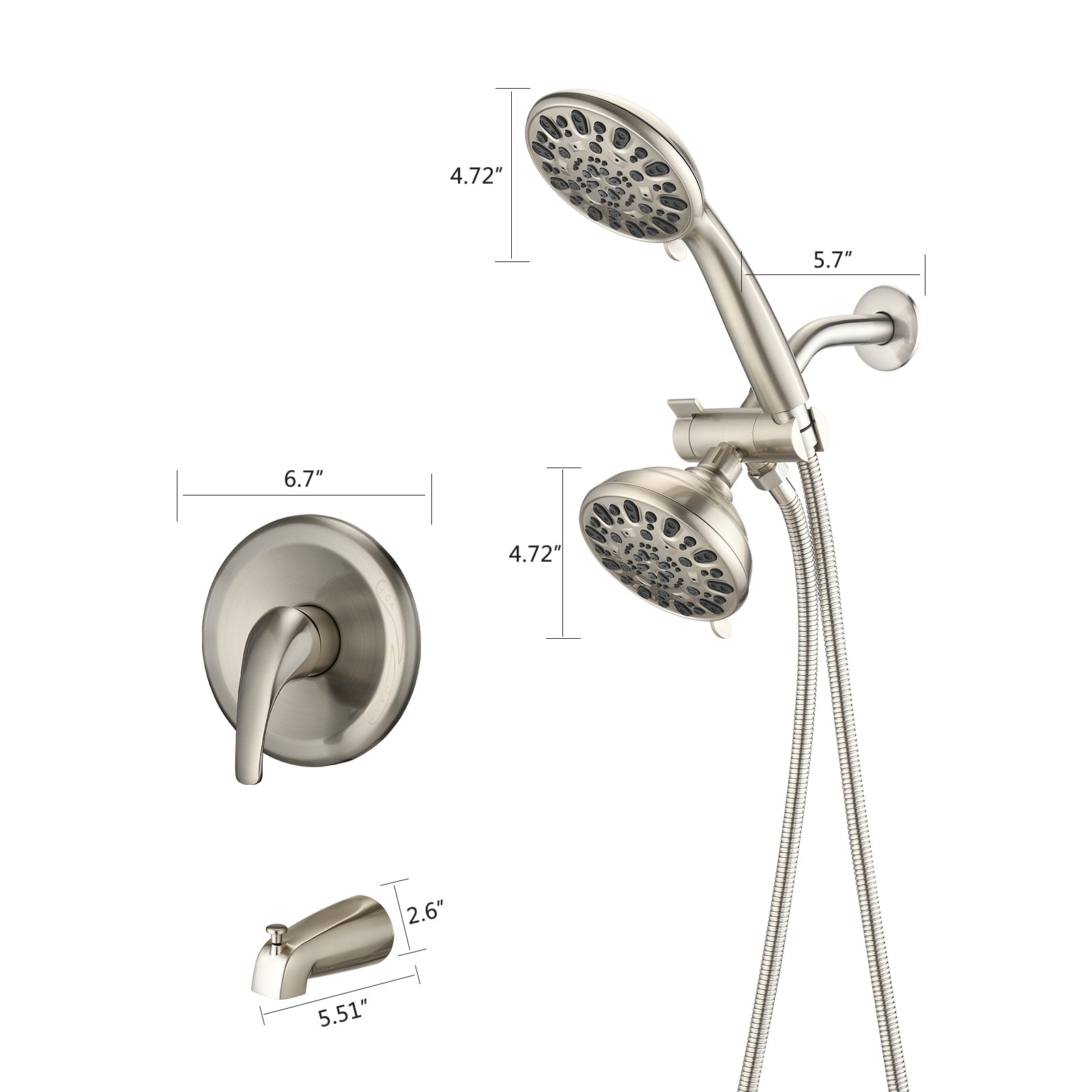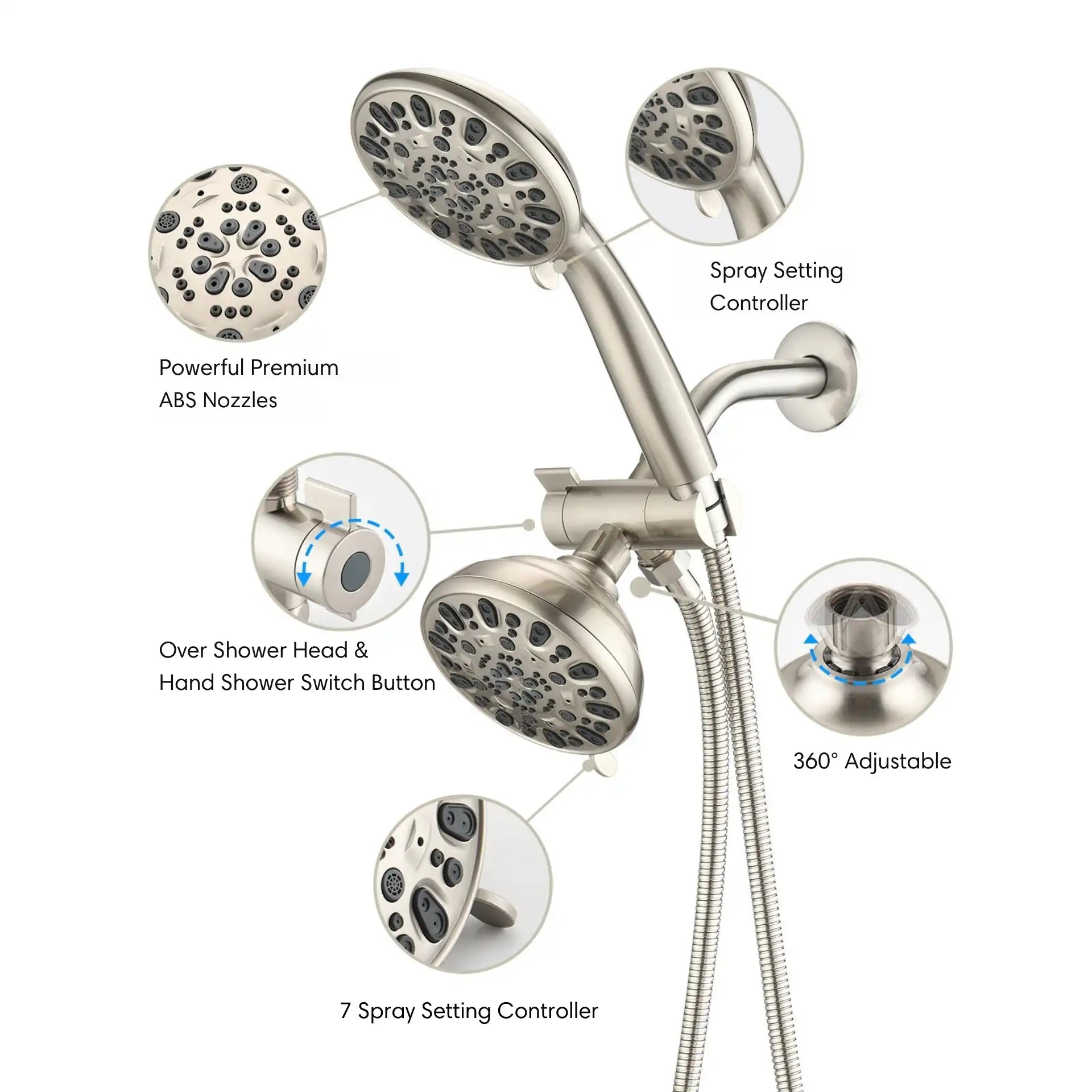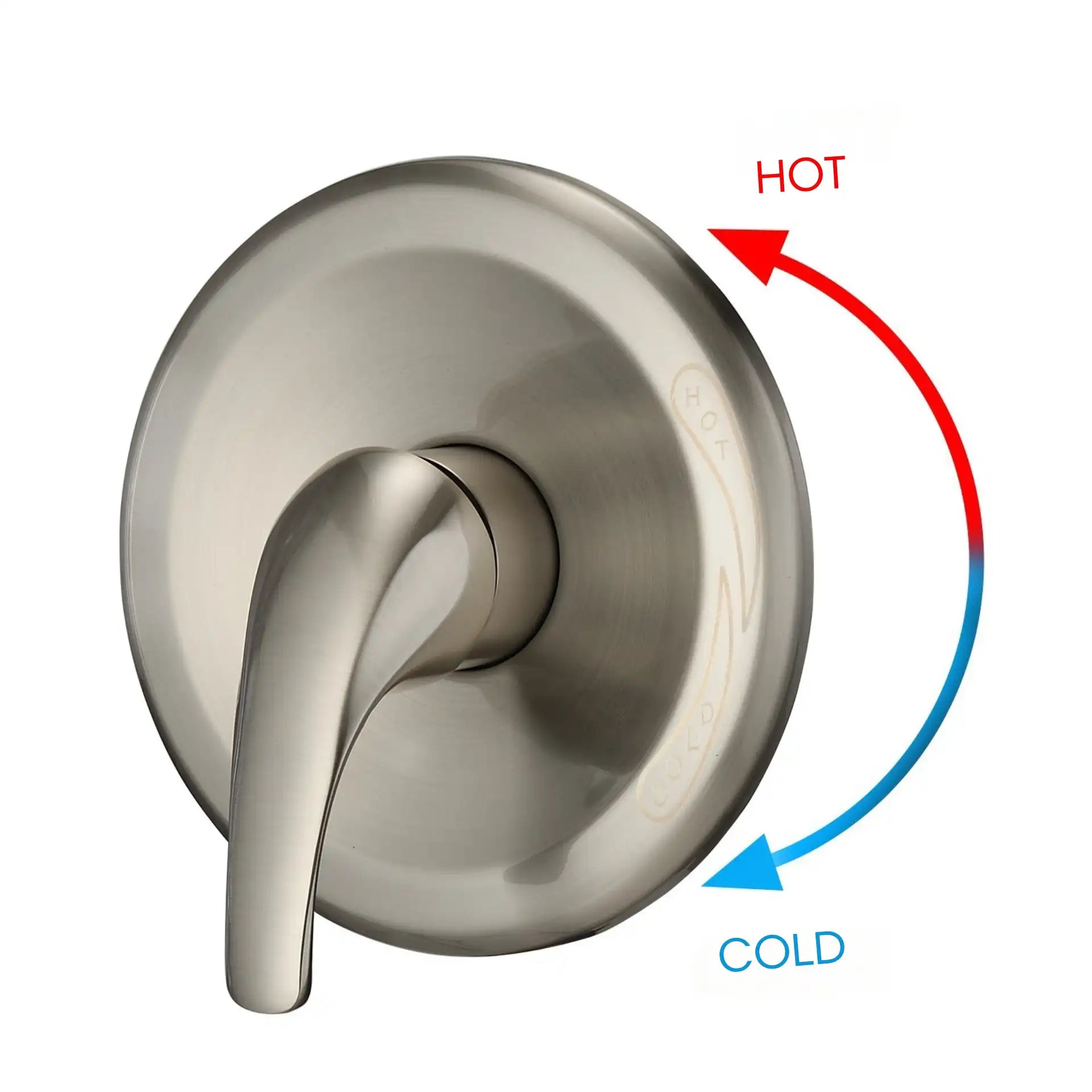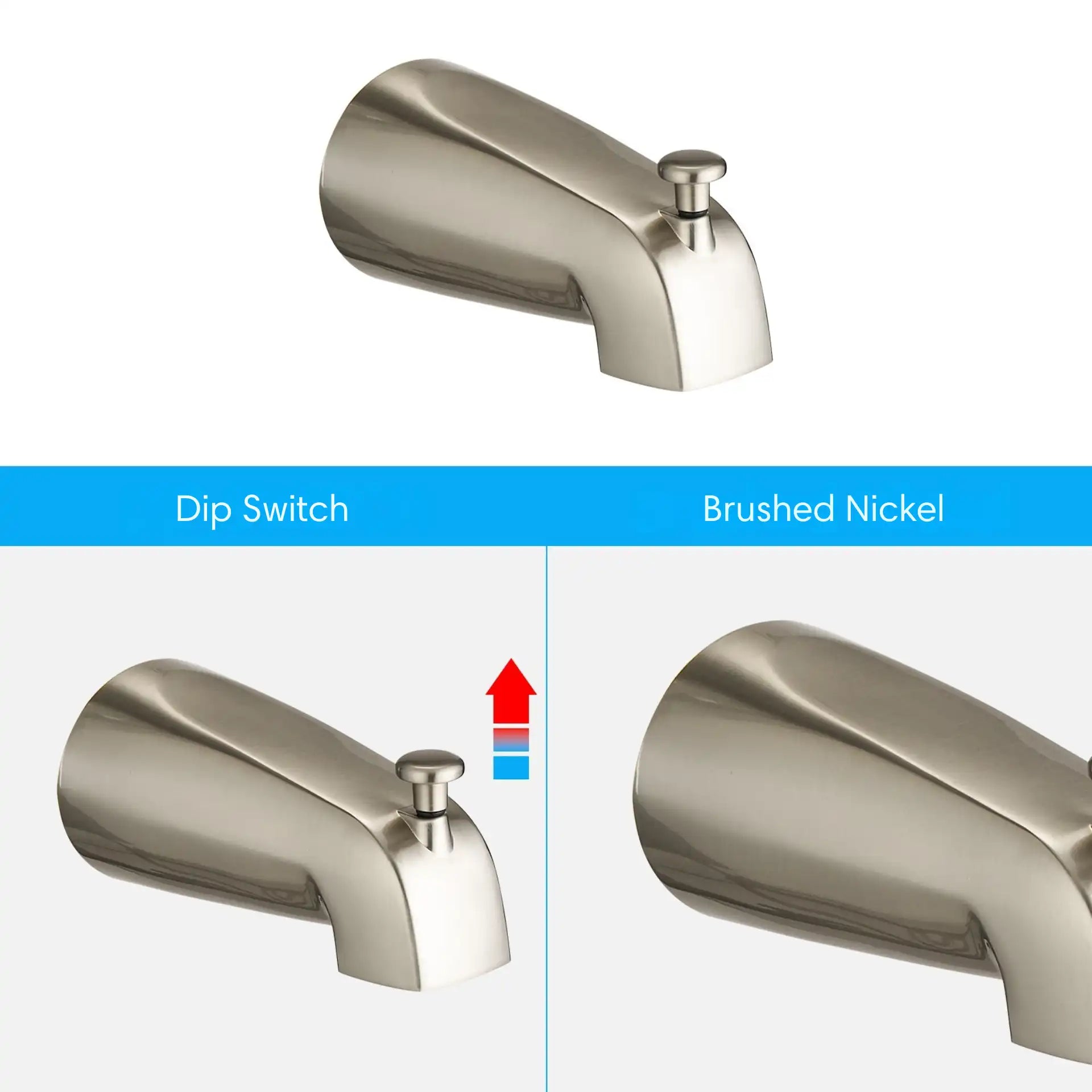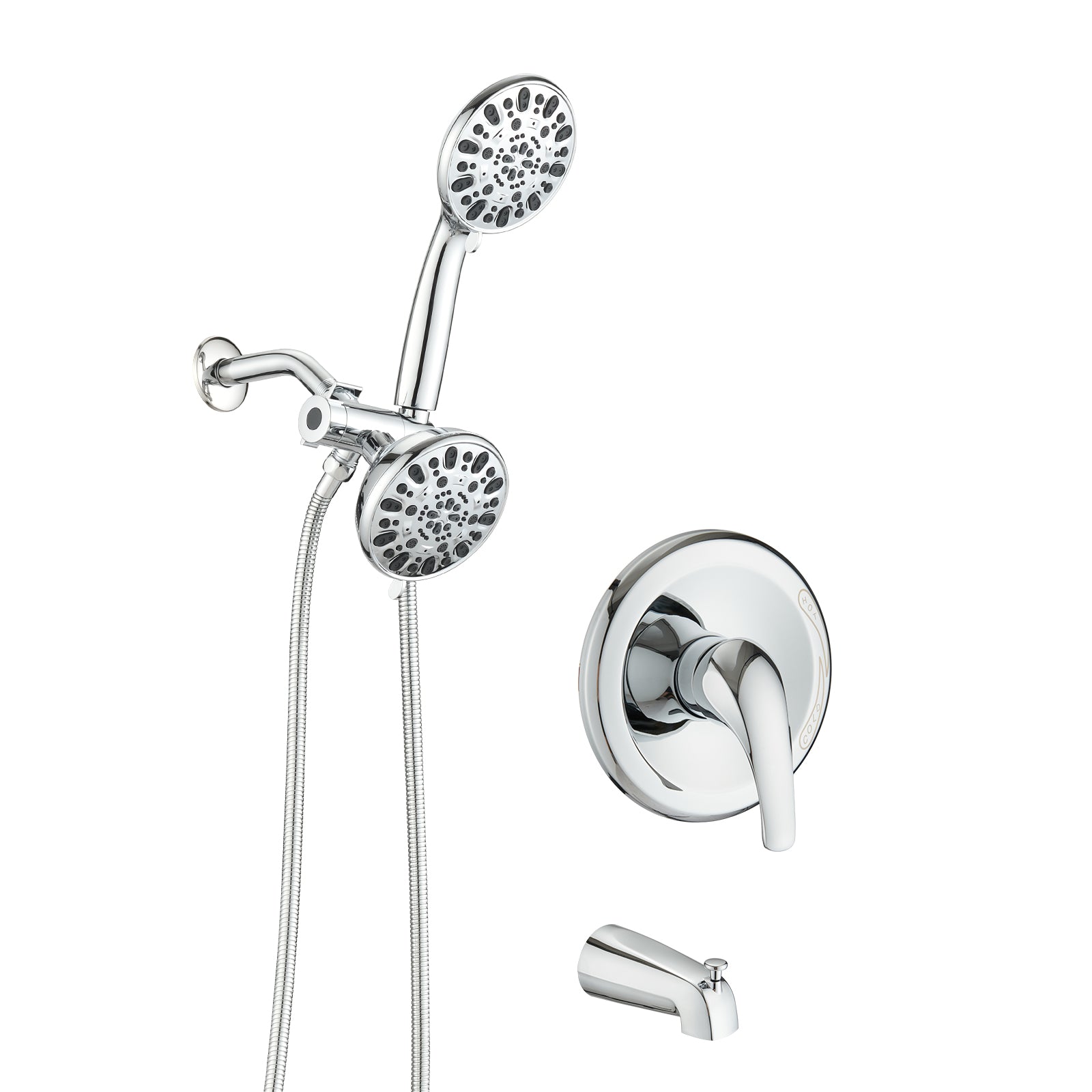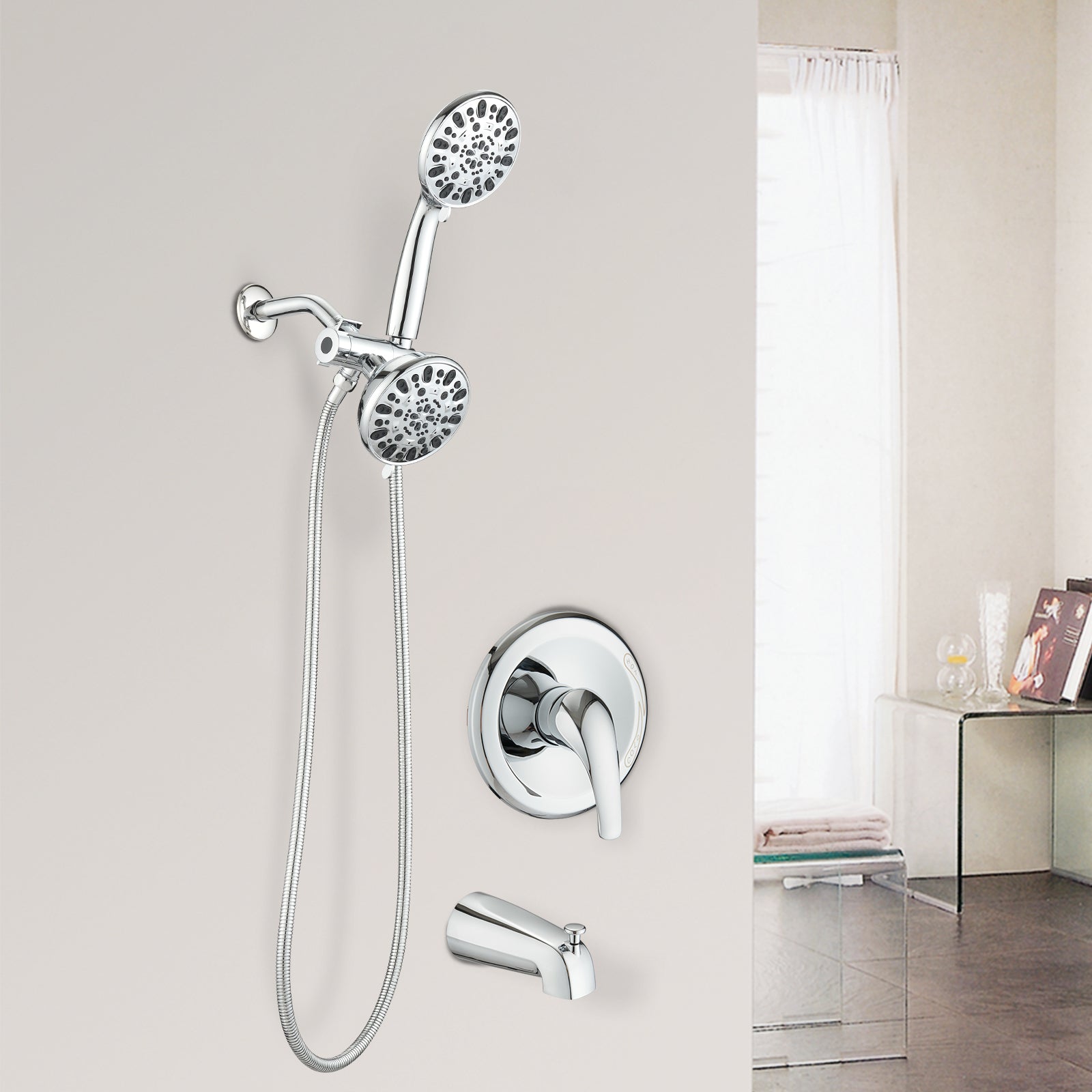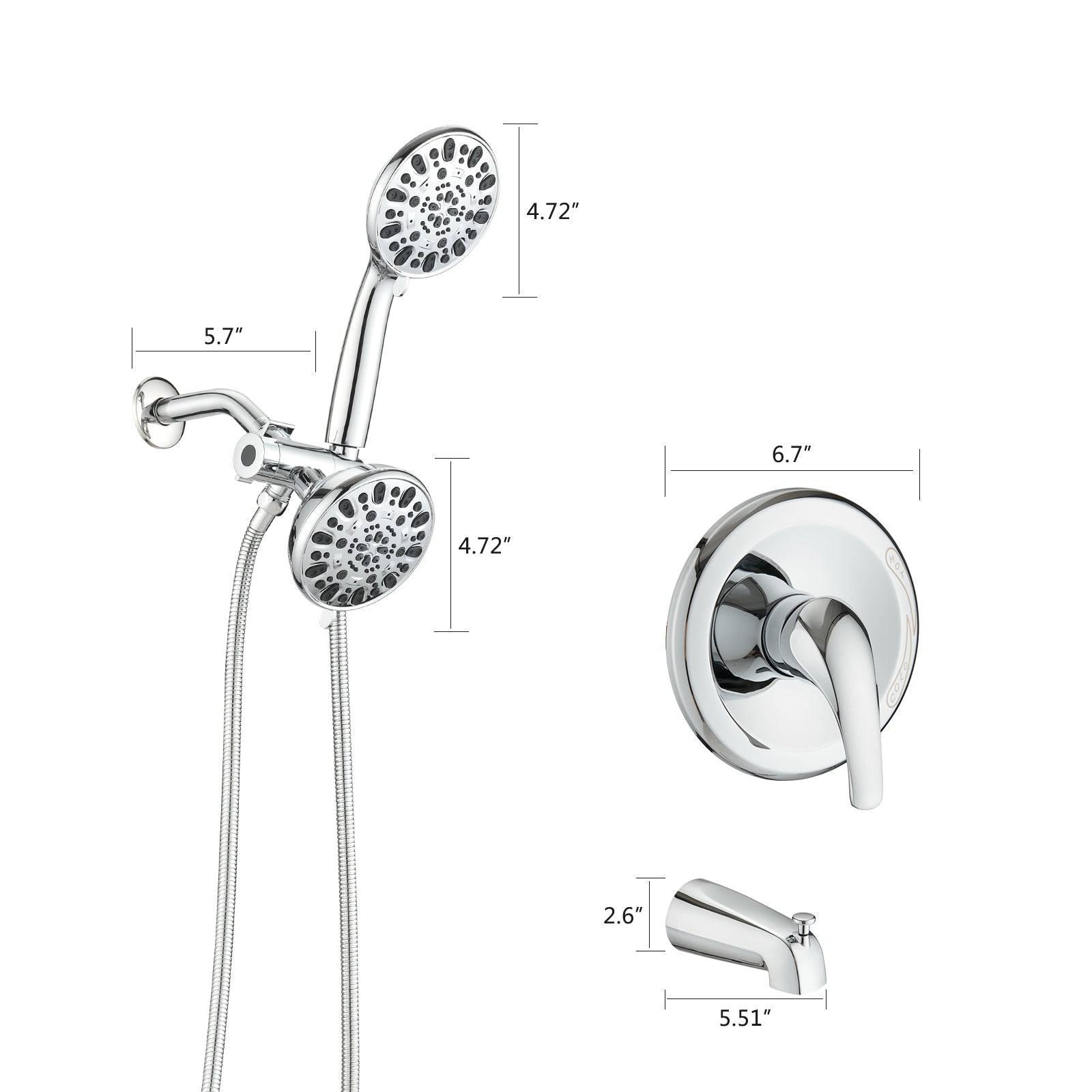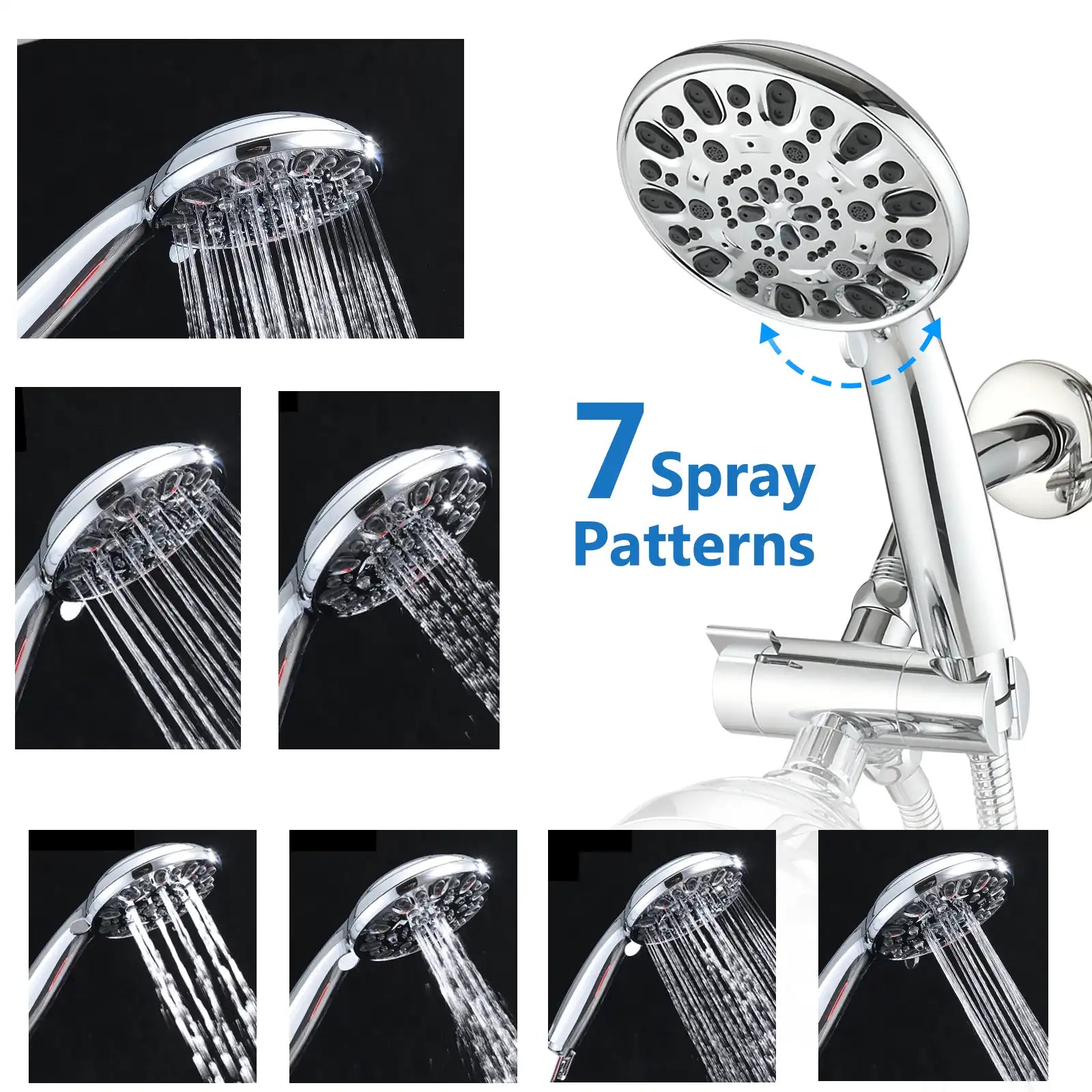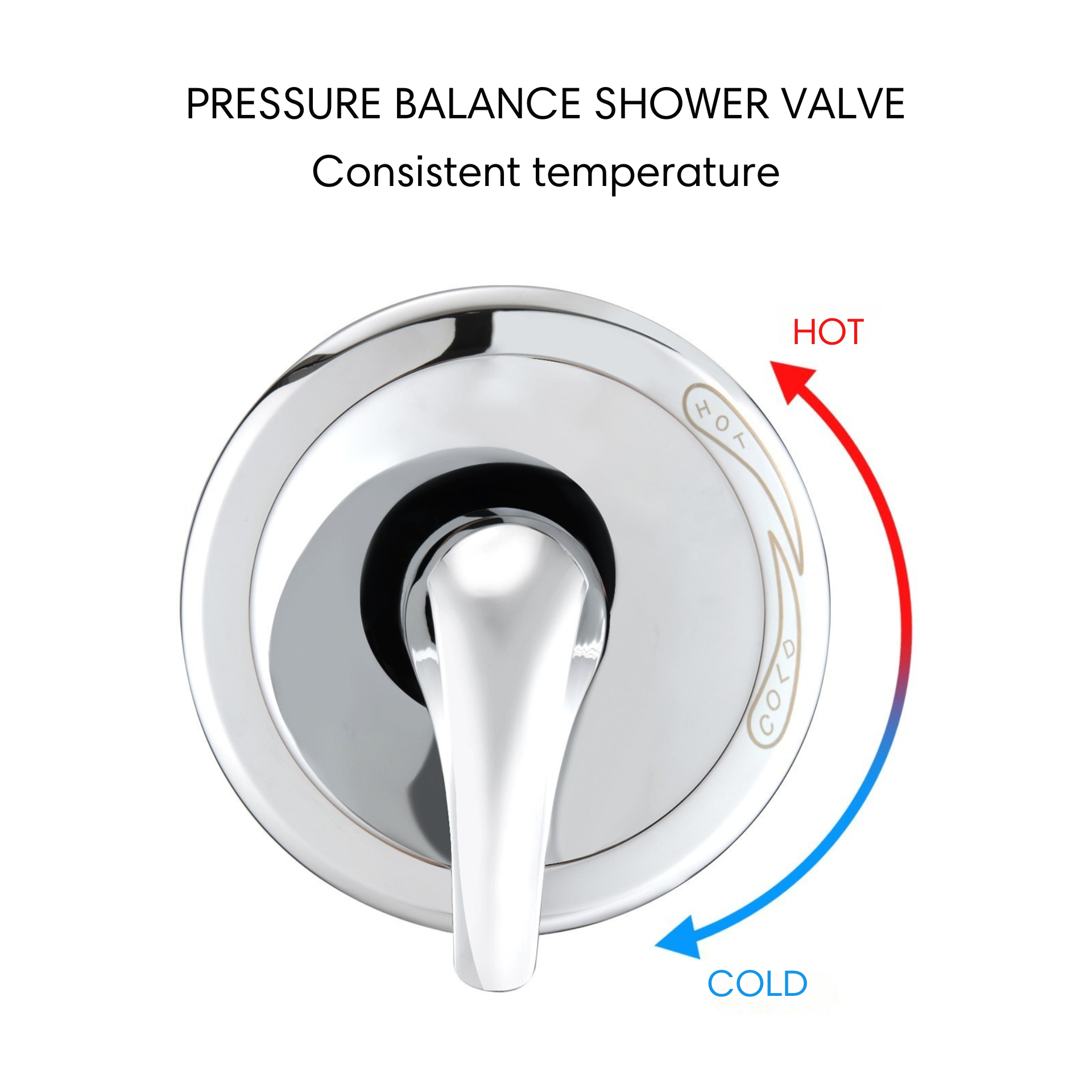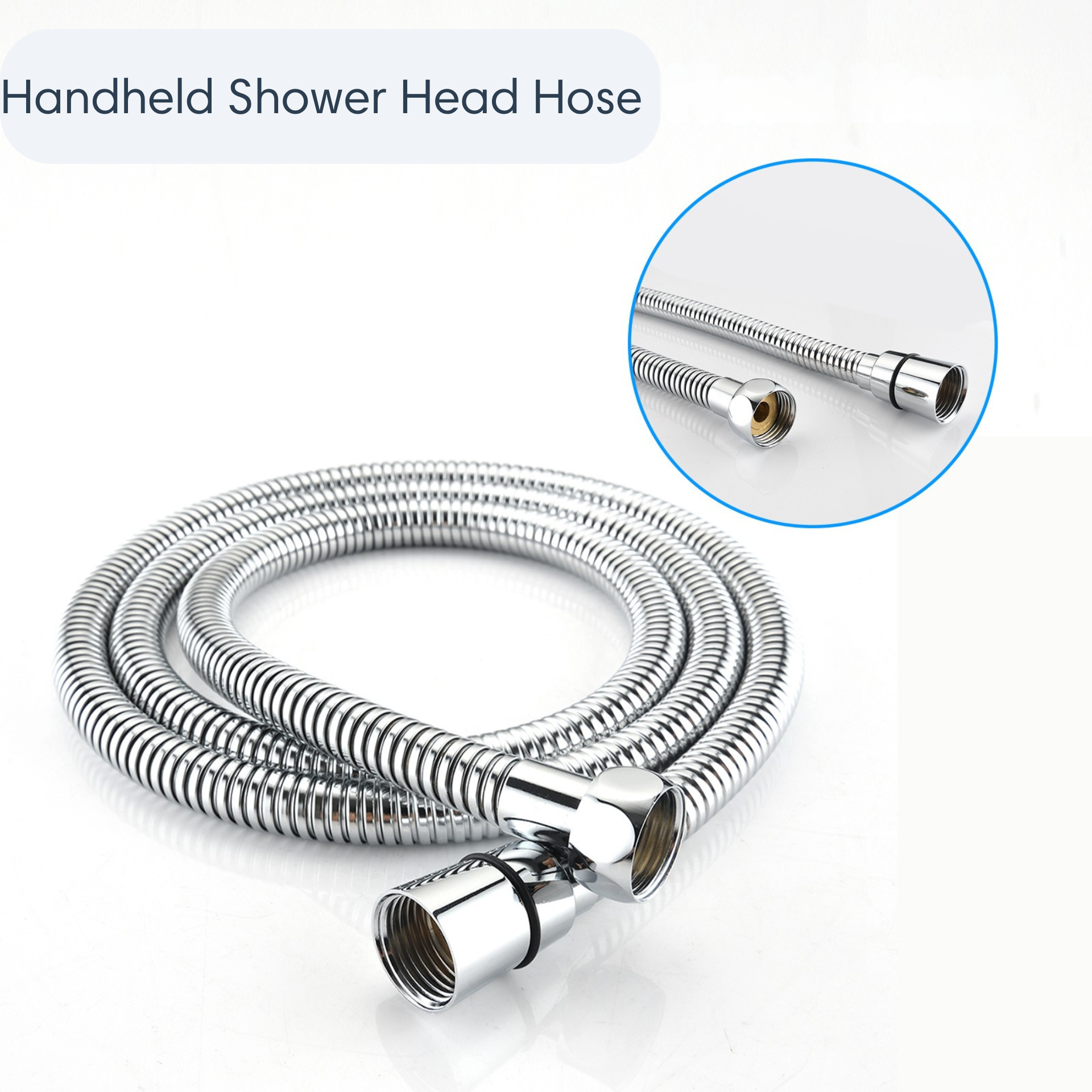Upgrading a bathroom in 2025 requires understanding the key components that shape comfort, safety, and water efficiency. Among them, the shower valve plays a central role, yet many homeowners still confuse it with the visible handle and trim on the wall. So, what is a shower valve, and why does it matter?
This guide highlights the modern types of shower valves, from basic pressure-balancing fixtures to digital systems, common signs of failure and details to consider before installation. Whether you're renovating or simply improving your daily shower experience, this article offers the essential knowledge you need to make confident decisions.
Table of Contents:
- Shower Handle & Trim vs. Shower Valve: Why People Often Confuse Them
- What Is a Shower Valve & How It Works
- Types of Shower Valves in 2025: From Standard to Advanced
- Pressure-Balancing Valves
- Thermostatic Valves
- Diverter Valves
- Transfer Valves
- Digital & Smart Shower Valves
- Signs of a Bad Shower Valve: How to Know It’s Time to Replace
- Installing or Replacing a Shower Valve: What Homeowners Should Know
- Conclusion
- FAQ
- Related Articles
Shower Handle & Trim vs. Shower Valve: Why People Often Confuse Them
One of the most common misconceptions around what is a shower valve stems from mixing up the visible parts of the shower system with the functional mechanism inside the wall. The handle and trim are the components you interact with every day. They include the lever, decorative cover plate, and sometimes indicators for temperature direction. These exterior parts have mostly cosmetic roles—they allow you to control the system but do not handle the actual water mixing.
The shower valve, however, is installed behind the wall. It is the internal brass or composite assembly that controls water temperature, regulates flow, and ensures safe operation. Because homeowners usually only see the trim, many assume that replacing a handle means replacing the valve, when in reality these are two separate components.

What Is a Shower Valve & How It Works
So, what is a shower valve, technically speaking? Think of it as a precision mixing and control device attached to hot and cold plumbing in your home. It mixes both streams and delivers a consistent blend to your shower.
Inside the valve body are cartridges, seals, pressure-balancing mechanisms, or thermostatic elements depending on the model. Here is how it works step-by-step:
-
Hot and cold water from your plumbing enter the valve through separate inlets.
-
The internal mixing mechanism delivers a blend to the showerhead and adjusts the proportions of hot and cold water depending on the position of the handle.
-
Flow control components ensure a consistent volume of water exits the valve.
-
Safety mechanisms respond to sudden pressure drops or changes in your plumbing system.
In modern homes, the demand for water often changes rapidly—a toilet is flushed, or someone starts a dishwasher. A decent shower valve will not deliver bursts of hot or cold water when they happen. This consistent output is invaluable, not merely for comfort, but also for safety. It is particularly relevant in homes with children or elderly folks.

Types of Shower Valves in 2025: From Standard to Advanced
1. Pressure-Balancing Valves
These are the most common valves found in residential bathrooms. A pressure-balancing valve maintains a consistent mix of hot and cold water by reacting to changes in water pressure. If someone flushes a toilet and cold-water pressure drops, the valve reduces hot-water flow proportionally to maintain a safe temperature.
They are budget-friendly and highly reliable, making them a popular choice for standard shower installations.
2. Thermostatic Valves
Thermostatic valves represent a higher level of comfort and precision. Instead of adjusting flow based on pressure, these valves use a thermostatic element to maintain the exact temperature you set—down to the degree. Moreover, it is possible to preset the temperature you want, and the output will be consistent throughout the whole period of taking your shower
Thermostatic valves also allow separate control of temperature and flow, enabling more personalized shower experiences.
3. Diverter Valves
A diverter valve controls the direction of water flow. It does not mix water but reroutes it. For example:
-
From showerhead to handheld sprayer
-
From tub spout to showerhead
-
Between multiple shower fixtures
Most diverters have 2 or 3 positions, but advanced systems can support even more.
4. Transfer Valves
Transfer valves can offer much more flexibility than diverters. Instead of switching water flow between fixtures, they can make multiple outlets work at the same time. This makes them ideal for multi-function shower systems with body jets, rainfall heads, and handheld sprayers.
5. Digital & Smart Shower Valves (2025 Trend)
Finally, digital showering is one of the fastest-growing 2025 Trends in bathroom remodels. These valves use advanced digital technologies and sensors to offer a range of features that other types of valves do not have:
-
Touchscreen or app-based control
-
Precise digital temperature settings
-
Water-usage monitoring for conservation
-
Multiple user presets
-
Warm-up modes that alert you when the shower reaches your set temperature
Comparison Table Summary: Pros & Cons of Different Shower Valves
| Valve Type | Pros | Cons |
|---|---|---|
| Pressure-Balancing | Affordable; basic safety; stable under pressure changes | Less precise temperature control; single-function systems only |
| Thermostatic | Exact temperature control; separate flow/temperature; ideal for multi-outlet showers | Higher cost; needs more space; pro installation recommended |
| Diverter | Simple way to switch between outlets; compact | Only one outlet at a time; not for multi-function use |
| Transfer Valve | Can run multiple outlets at once; versatile | More expensive; requires specific plumbing layout |
| Digital / Smart | Touch/app control; presets; precise performance; water monitoring | Highest cost; requires power; more complex install |
Signs of a Bad Shower Valve: How to Know It’s Time to Replace
A worn-out or malfunctioning shower valve can significantly impact your daily routine. Here are the most common signs:
1. Temperature fluctuations
When the water is suddenly either boiling or ice-cold and you have not even touched the handle, this could be due to the failing pressure-balancing mechanism.
2. Difficulty turning the handle
Stiffness, grinding, or jamming can be an indication of the wear-out of a cartridge or a build-up of minerals on the inside.
3. Irregular or low water pressure
A failing shower valve can either restrict the water or result in a pulsing water flow.
4. Leaks behind the wall
A leaking valve can cause expensive water damage. If you notice moisture around the trim plate or unexplained mold, the valve might be the source.
5. Aging systems (10–15 years old)
Most shower valves are expected to serve their purpose for about 10 to 15 years. If your home’s plumbing is older, upgrading may provide better safety and efficiency.
Installing or Replacing a Shower Valve: What Homeowners Should Know
If you plan to upgrade your valve, especially after researching what is a shower valve and discovering how essential it is, there are several important factors to consider before installation:
1. Compatibility
Not all trims fit all valves. Verify compatibility with pipe connections, rough-in depth, and wall structure.
2. Pipe layout
Some valve types require rearranging copper, PEX, or galvanized piping. Thermostatic and digital valves may require more space.
3. Access panel or wall opening
If you don’t have a rear access point, installation may require opening the tile or shower wall.
4. Professional installation
While simple cartridge replacements can be DIY, full valve replacement usually requires a licensed plumber. This ensures proper sealing, pressure testing, and safety compliance.
5. Future-proofing

Conclusion
Understanding what is a shower valve is essential for anyone looking to maintain, upgrade, or remodel their bathroom in 2025. From differentiating between the trim and valve body to learning how the system works, identifying modern valve types, spotting warning signs, and installation tips, this guide equips you with the knowledge needed to make informed decisions.
A correctly chosen shower valve will promote comfort, protect your home, and bring a daily customized experience. From a basic pressure-balancing solution to a digital system, knowing the issue will help you to choose the right solution for a long-lasting performance.
FAQ
Q1. What is a shower valve and why is it important?
Q2. How long does a shower valve last?
3. What’s the difference between a thermostatic valve and a pressure-balancing valve?
Q4. Do I need a plumber to replace a shower valve?
Q5. How do I choose the right shower valve for a bathroom remodel?
Q6. What’s the difference between a shower valve and a cartridge?
Related Articles
What Does Shower Valve Trim Do? Function, Selection & Care
Shower Valve Height Standards in 2025: How to Set the Perfect Height for Comfort and Compliance
Shower Head Height Guide: Standard Measurements & Best Practices


